
SPECIAL TOPIC


SPECIAL TOPIC
EAGE NEWS Exhibition for Annual 2024 nearly sold out INDUSTRY NEWS TGS and PGS agree to merge TECHNICAL ARTICLE 3D static modelling at the Karam field, Egypt

Scan the QR code to see for yourself.
FIRST BREAK ® An EAGE Publication
CHAIR EDITORIAL BOARD
Gwenola Michaud (gmichaud@gm-consult.it)
EDITOR
Damian Arnold (arnolddamian@googlemail.com)
MEMBERS, EDITORIAL BOARD
• Lodve Berre, Norwegian University of Science and Technology (lodve.berre@ntnu.no)
Philippe Caprioli, SLB (caprioli0@slb.com) Satinder Chopra, SamiGeo (satinder.chopra@samigeo.com)
• Anthony Day, PGS (anthony.day@pgs.com)
• Peter Dromgoole, Retired Geophysicist (peterdromgoole@gmail.com)
• Kara English, University College Dublin (kara.english@ucd.ie)
• Stephen Hallinan, CGG Stephen.Hallinan@CGG.com
• Hamidreza Hamdi, University of Calgary (hhamdi@ucalgary.ca) Clément Kostov, Freelance Geophysicist (cvkostov@icloud.com)
Pamela Tempone, Eni (Pamela.Tempone@eni.com)
• Angelika-Maria Wulff, Consultant (gp.awulff@gmail.com)
EAGE EDITOR EMERITUS
Andrew McBarnet (andrew@andrewmcbarnet.com)
MEDIA PRODUCTION
Saskia Nota (firstbreakproduction@eage.org)
PRODUCTION ASSISTANT
Ivana Geurts (firstbreakproduction@eage.org)
ADVERTISING INQUIRIES corporaterelations@eage.org
EAGE EUROPE OFFICE
Kosterijland 48 3981 AJ Bunnik
The Netherlands +31 88 995 5055
• eage@eage.org www.eage.org
EAGE MIDDLE EAST OFFICE
EAGE Middle East FZ-LLC
Dubai Knowledge Village Block 13 Office F-25 PO Box 501711
Dubai, United Arab Emirates
• +971 4 369 3897
• middle_east@eage.org
• www.eage.org
EAGE ASIA PACIFIC OFFICE
UOA Centre Office Suite 19-15-3A No. 19, Jalan Pinang 50450 Kuala Lumpur
Malaysia
• +60 3 272 201 40 asiapacific@eage.org
• www.eage.org
EAGE AMERICAS SAS
Av. 19 #114-65 - Office 205 Bogotá, Colombia
• +57 310 8610709
• +57 (601) 4232948
• americas@eage.org www.eage.org
EAGE MEMBERS CHANGE OF ADDRESS NOTIFICATION
Send to: EAGE Membership Dept at EAGE Office (address above)
FIRST BREAK ON THE WEB www.firstbreak.org
ISSN 0263-5046 (print) / ISSN 1365-2397 (online)
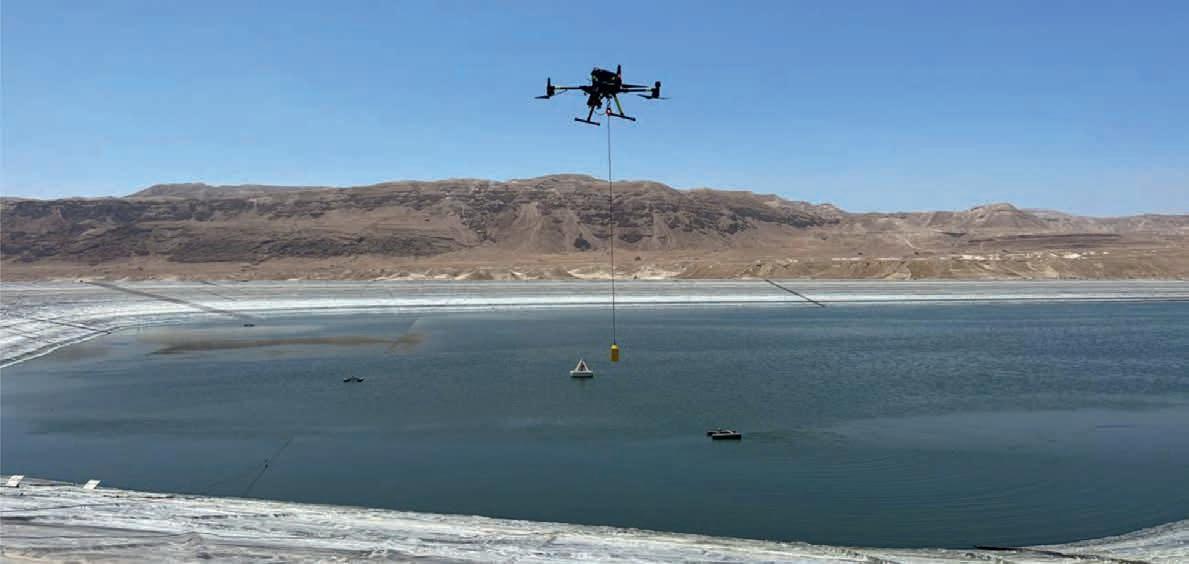
Water bodies data collection using UAV: UXO search and bathymetry
31 A pre-stack inversion method based on self-facies-control low-frequency model and its application in offshore reservoirs
Wang Zongjun, MA Liangtao and Dong Hongchao
43 Application of 3D static modelling and reservoir characterisation for optimal field development: A case study from the Kharita Formation, Karam field, Western Desert, Egypt Ahmed Bakr, Mohamed Reda and Mohamed Fathy
53 Advanced 3D seismic crossover technologies between hydrocarbon exploration, CCS development, and offshore wind
Martin Widmaier, Carine Roalkvam and Okwudili Orji
59 Advances in seismic acquisition: a novel approach using autonomous underwater gliding nodes
Fabio Mancini, Ben Hollings, Giorgio Mangano, Dhimitraq Gjini, Damien Dieulangard, Ted Manning, and Henry A. Debens
65 Water bodies data collection using UAV: UXO search and bathymetry
Alexey Dobrovolskiy
71 MEMS-based OBN: lessons learnt from the largest OBN survey worldwide
Nicolas Tellier and Philippe Herrmann
81 Autonomous vehicles for deployment and recovery of seismic ocean bottom nodes
Tim Bunting
85 Enhanced RTM imaging of marine streamer data using Pseudo Split-Spread (PSS) shot gathers
Richa Rastogi, Abhishek Srivastava, Bhushan Mahajan, Monika Gawade, Suhas Phadke and Saheb Ghosh
93 The increasing appeal of single-element pneumatic point sources
Marc Rocke, Carsten Udengaard, David Brookes and Curt Schneider
98 Calendar
cover: iDROP’s free-drop node - Oceanid™ shortly after basket release. Other innovations in ocean bottom nodes are featured this month.
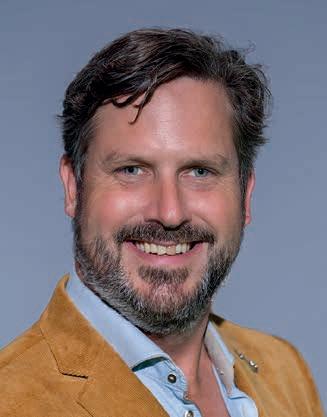
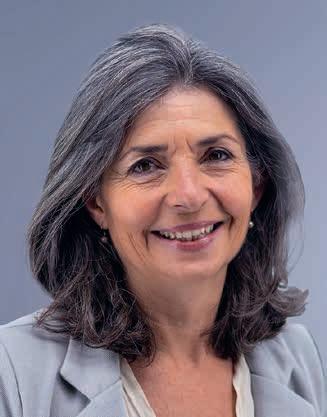


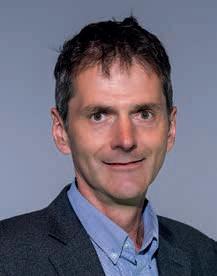
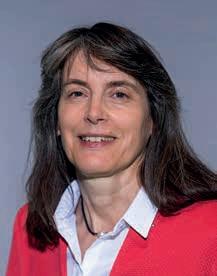

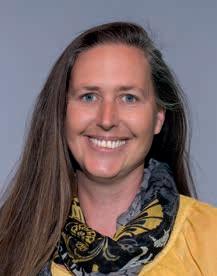

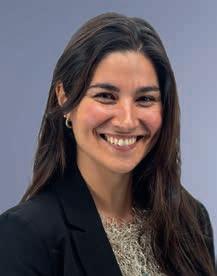
Esther Bloem Chair
Andreas Aspmo Pfaffhuber Vice-Chair
Micki Allen Contact Officer EEGS/North America
Adam Booth Committee Member
Hongzhu Cai Liaison China
Deyan Draganov Technical Programme Officer
Wolfram Gödde Liaison First Break
Hamdan Ali Hamdan Liaison Middle East
Vladimir Ignatev Liaison CIS / North America
Musa Manzi Liaison Africa
Myrto Papadopoulou Young Professional Liaison
Catherine Truffert Industry Liaison
Mark Vardy Editor in Chief Near Surface Geophysics
Florina Tuluca Committee member
Yohaney Gomez Galarza Chair
Johannes Wendebourg Vice-Chair
Lucy Slater Immediate Past Chair
Erica Angerer Member
Wiebke Athmer Member
Tijmen Jan Moser Editor-in-Chief Geophysical Prospecting
Adeline Parent WGE & DET SIC liaison
Matteo Ravasi YP Liaison
Jonathan Redfern Editor-in-Chief Petroleum Geoscience
Aart-Jan van Wijngaarden Technical Programme Officer
Carla Martín-Clavé Chair
Giovanni Sosio Vice-Chair
SUBSCRIPTIONS
First Break is published monthly. It is free to EAGE members. The membership fee of EAGE is € 80.00 a year including First Break, EarthDoc (EAGE’s geoscience database), Learning Geoscience (EAGE’s Education website) and online access to a scientific journal.
Companies can subscribe to First Break via an institutional subscription. Every subscription includes a monthly hard copy and online access to the full First Break archive for the requested number of online users.
Orders for current subscriptions and back issues should be sent to EAGE Publications BV, Journal Subscriptions, PO Box 59, 3990 DB, Houten, The Netherlands. Tel: +31 (0)88 9955055, E-mail: subscriptions@eage.org, www.firstbreak.org.
First Break is published by EAGE Publications BV, The Netherlands. However, responsibility for the opinions given and the statements made rests with the authors.
COPYRIGHT & PHOTOCOPYING © 2023 EAGE
All rights reserved. First Break or any part thereof may not be reproduced, stored in a retrieval system, or transcribed in any form or by any means, electronically or mechanically, including photocopying and recording, without the prior written permission of the publisher.
The publisher’s policy is to use acid-free permanent paper (TCF), to the draft standard ISO/DIS/9706, made from sustainable forests using chlorine-free pulp (Nordic-Swan standard).

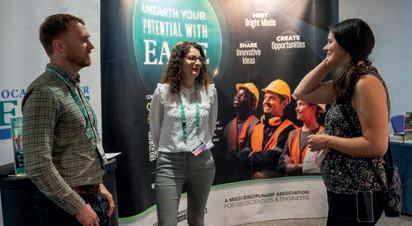

The Exhibition at our upcoming Annual Meeting in Oslo continues to attract many big players in the industries we serve. Over 80% of the Exhibition space has been sold. National and international energy companies, service companies, academic and research institutes, governments, licensing agencies, etc. are all represented. We explain why.
With the resounding success of the 84th EAGE Annual in Vienna last June, we are confident in anticipating an attendance of an estimated 6000 participants coming to the 85th edition in Oslo between 10-13 June 2024.
The Exhibition at our Annual remains a must visit for all. This is the place where our attendees can stay up-to-date with the latest technical
knowledge, and grow a network of invaluable contacts for benchmarking, partnering, and building their organisations and careers. For both companies and organisations, the Annual Exhibition retains a proven track record of success in showcasing innovative products, services, and opportunities, as well as securing business agreements. Exhibitors can expect visitors from all
From Edward Wiarda, president EAGE
The hearts and thoughts of our EAGE community go out to the families and loved ones affected by the recent devastating earthquakes in Morocco and catastrophic flooding in Libya. These are human tragedies on an unimaginable scale, and no words can adequately describe the shock of thousands of lives lost in an instant, the families displaced and the accompanying appalling destruction. Both these terrible events touch on the professional concerns of many in our membership. We are reminded that so much more research of the near- and subsurface is needed within geoscience and engineering disciplines to give us some hope that disasters such as these can be prevented, or at least the associated risks better identified, mapped, communicated, and even mitigated. Meantime, we must trust that every effort is made to support the grieving and these communities cruelly torn apart, while initiating infrastructure reparations as speedily as possible.
over the world, many of whom are potential clients, company influencers, and purchase decision-makers.
Daniel Swann, manager, corporate communications and EMEA marketing, Ikon Science, says: ‘The EAGE Annual is always the highlight of the calendar for our team. It is the single best opportunity to meet face-to-face with many of our clients and key decision-makers from across the industry. We have the opportunity to showcase our innovation and expertise against the backdrop of a conference filled by industry leaders in both the theoretical and practical applications of the science and technology that will take our industry sustainably into the future.’
Multiple special interest areas, committed to specific disciplines, will once again be featured at our Annual Exhibition.
The Digital Transformation Area seeks to explore and showcase solutions around people, processes, and technology. New ideas and new ways of working smarter, faster, and more efficiently will be addressed.
The Energy Transition Area aims to bring attention to the progress being made
in developing new technologies and projects in support of energy transition and decarbonisation.
The International Prospect Centre provides licensing agencies and national energy companies with the opportunities to promote exploration and investment opportunities, inform the industry on current and new exploration activities, announce licensing rounds, promote acreage, release data packages, and present potential projects and developments.
The Start-Ups Area introduces the next generation of technologies and solutions that may be evolving in the near future.

The University Area provides universities with the opportunity to promote their latest research and developments.
Looking at the commitments of the companies and organisations already on board, the signs for the EAGE Annual in Oslo are extremely positive. Our Exhibition welcomes everyone, and you can still register your institution as an exhibitor. Simply contact exhibition@eage.org if you want to be part of the Exhibition, and our account managers will be happy to assist you with further information. Save with the early booth booking rate until 1 December 2023.
Stay tuned to our website www. eageannual.org for updates on the developments of the EAGE Annual 2024 in general and the Exhibition in particular.
Norway holds a special place in the history of the EAGE Annual. It has been four decades since we first brought our Annual Meeting to Oslo, Norway’s capital, back in 1983. The Annual revisited Norway in 2003, in Stavanger. These significant milestones marked the deep-rooted connection between Norway and the EAGE Annual, highlighting the country’s relevance to the fields of geoscience and engineering.
Throughout the years, Norwegian scientists in general and Oslo’s community in particular have made significant contributions to advancing the geoscience and engineering fields through ground-breaking research and exploration. The Geological Survey of Norway, based in Trondheim, has been at the forefront of geological mapping and research, providing invaluable insights into Norway’s geological composition and resources. Institutions such as the University of Oslo and the Norwegian University of Science and Technology have also fostered cutting-edge research and education in geosciences, attracting students and scholars from across the globe.
The geological significance of Oslo extends beyond its boundaries, as Norway itself boasts an abundance of natural resources that have shaped its economy and development. The country’s vast reserves of oil and gas in the North Sea have transformed Norway into a global energy player. Geoscientists and engineers have
played a crucial role in the exploration and extraction of these resources, utilising advanced technologies and methodologies to understand the complex subsurface structures and optimise production.
Furthermore, Norway’s commitment to sustainable energy solutions has led to increased focus on alternative energy sources. Geothermal energy, for instance, holds immense potential in Norway, with its geologically active areas and abundant underground heat. Industry players are exploring the possibilities of harnessing this clean, renewable energy to reduce reliance on fossil fuels and mitigate climate change.
Beyond its geological wonders and scientific contributions, Oslo embraces its connection to geosciences through various cultural and educational initiatives. The city is home to several captivating museums and exhibitions that showcase Norway’s geological heritage and educate the public about Earth’s natural processes. These institutions not only foster a deeper appreciation for geosciences but also inspire the next generation of scientists and explorers.
Now, as we look ahead, we are thrilled with the return to Norway for the EAGE Annual 2024. This signifies a celebration of the event’s journey and a renewed focus on the vibrant geoscience and engineering community in this remarkable country. It
is also an occasion to reconnect with all that Norway has to offer and engage with the exceptional researchers, experts, and enthusiasts that call this part of Scandinavia their home.
The upcoming edition of our Annual Meeting continues to serve as a dynamic platform for participants to explore a wide range of geoscience and engineering topics: seismic and non-seismic acquisition and processing, full waveform inversion, quantitative interpretation and AVO, rock physics, geology, reservoir engineering, subsurface characterisation, exploration and production, HPC, OSDU, data and information management and storage, CCS, geothermal, hydrogen, environmental science, etc.
With a diverse programme featuring outstanding oral and poster presentations – complemented by interactive workshops, dedicated sessions, engaging field trips, and informative short courses – event participants will have the opportunity to expand their knowledge, foster collaborations, and contribute to the advancement of their respective field.
If you would like to be part of our programme, there’s time to submit your abstracts before 15 January 2024 for a chance to be featured in the Technical Programme of the EAGE Annual 2024. Read more about the conference and abstract submission on www.eageannual.org.



Barents Sea, Norway











North West Shelf, Australia



North Sea, Norway



Subsalt, Gulf of Mexico
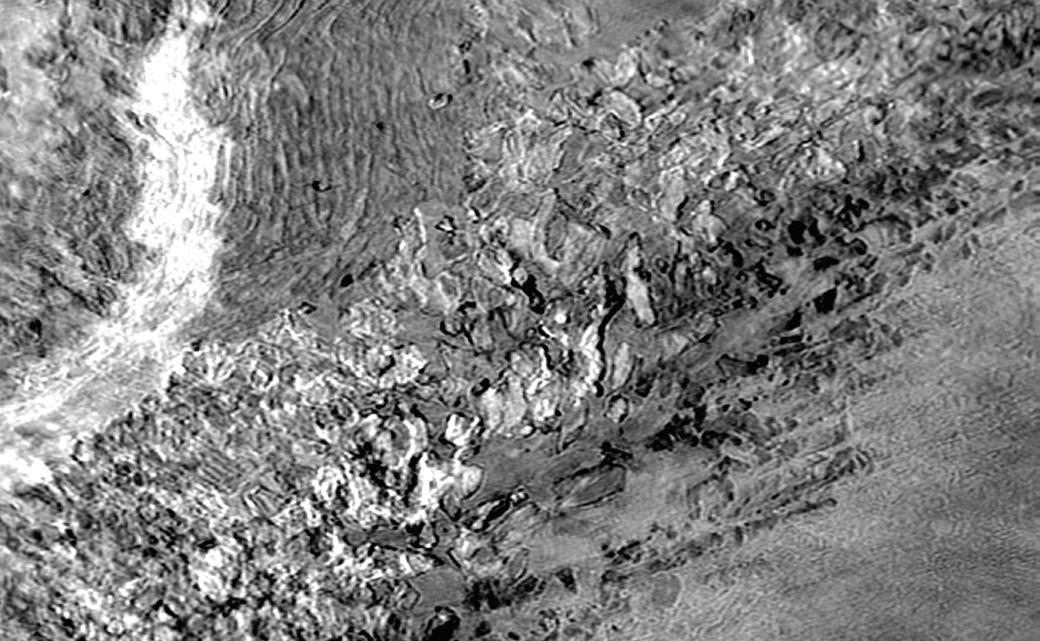
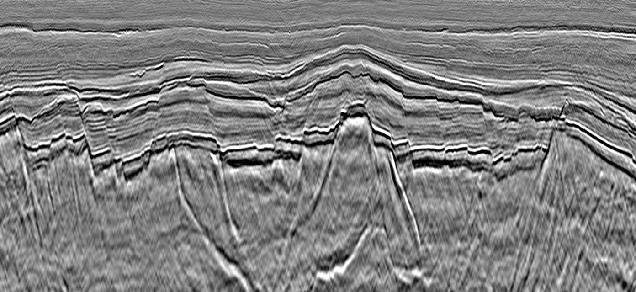



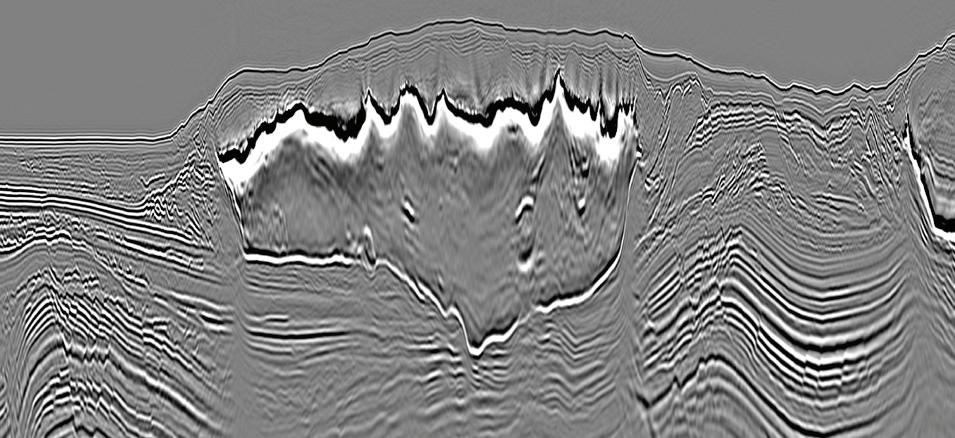


Let’s talk — contact info@dug.com
dug.com/fwi

After a productive meeting in Cyprus in December 2021, we invite you to join us in Athens, Greece, from 4-6 December for the 4th EAGE Eastern Mediterranean Workshop. The workshop aims to bring together both established and emerging researchers from diverse disciplines.

Aristofanis Stefatos, chair of the Technical Committee, says ‘We hope to create a vibrant environment for exchanging ideas and encouraging future collaborations by facilitating research presentations, panel discussions, field trips, and social activities. The theme “Unlocking New Energy Resources” was carefully chosen to reflect the region’s renewed exploration interest and relevance.’
The Eastern Mediterranean region stands out as a developing energy province, rich in natural gas reserves and with an indisputable renewable energy potential. Future plans and developments are expected to facilitate alternative low carbon products from the area, e.g., through carbon sequestration, hydrogen, methanol and ammonia
production, storage and transportation, geothermal, offshore wind and solar power. Evaluating and re-purposing the subsurface will add a cyclic economy component and cross sectorial value to the needs of the region. This shows the region’s critical role in meeting rising energy demands, particularly in the transition towards cleaner and more sustainable energy sources.
This niche workshop aims to further explore the complex regional geology, the development and evolution of structural styles, depositional systems and their implications for the prospectivity, and further potential of the Eastern Mediterranean. Topics include regional geology, neotectonic impacts, petroleum system controls, subsurface monitoring, and technological advancements. The programme also emphasises the role of gas in the energy transition, exploring synergies with hydrogen, methanol, and ammonia production.
Excited to join us and discover more? Take advantage of the reduced registration fees and secure your spot before 12 November.
for complete information about this event.
7-8
8

As we stand amid an industry transformation, we explore how digitalization is shaping the future, leveraging data and driving the energy transition, all of which will be discussed at the 4th EAGE Digitalization Conference and Exhibition. EAGE Digital 2024 is set to take place in Paris on 25-27 March under the theme ‘Digital: Delivering better energy in a transforming world’.
When we talk about digitalization, what is the initial thought that springs to your mind? If it is simply ‘machine learning’, you could be overlooking some essential pieces of the transformative journey in progress.
Below the surface, innovation thrives. Digital twins, replicas of physical systems, redefine how we understand and manage our world. Robotics, drones, and unmanned vehicles bring automation

It begins with data. In the digital era, data is indeed the new gold providing the ability to transform vast amounts of information into actionable insights. It fuels the engines of innovation, allowing us to drive change and unlock new possibilities.
From structured data to unstructured documents, the ability to extract valuable insights is driving profound changes. The shift from relational databases to knowledge graph approaches enhances our understanding of interconnected information. Collaborative digital ecosystems and partnerships accelerate innovation, and generative AI pushes the boundaries of what machines can create. Through real-world case studies, we witness the tangible impact of digital technology in diverse industries.
to the forefront, revolutionising industries. Geoinformatics empowers us with spatial data analysis, while augmented reality enhances health, safety, security, and environment (HSSE) practices. Real-time monitoring and the Internet of Things (IoT) grant us unparalleled insights, and high-performance computing, along with quantum computing, propels us into a new era of computational power.
Of course, we cannot exclude applied analytics and machine learning, as these are the driving forces behind a paradigm shift in subsurface exploration and management. From the automation of subsurface interpretation to the utilisation of machine learning for geophysics, this field explores
the evolving landscape of data-driven decision-making in industries. It extends the impact of data-driven approaches in optimising production and operations, covering aspects like well data, core analysis, thin sections, and logs. The critical issue of model interpretability takes the spotlight, ensuring that these advanced models are not just powerful but also understandable.
As we conclude our journey, we arrive at a pivotal crossroads – digitalization as a lever for energy transition and sustainability. The technologies we have explored play a crucial role in reshaping our energy industry for a more sustainable future.
From ensuring structural integrity to optimising energy trading and forecasting, digitalization is becoming the driving force behind a greener world. Energy trading, smart grids, and energy forecasting drive efficiency in our quest for a sustainable energy future. The transition to new energies, such as carbon capture and storage (CCS), wind farms, and geothermal energy, relies on digitalization. In critical sectors like mining, digital innovations enhance safety, productivity, and sustainability. Artificial intelligence optimises resource utilisation and reduces waste, aligning with our sustainability goals.
Join us!
We invite you to participate in this transformative journey by joining the line-up of technical programme speakers. Submit your abstracts on key topics by 10 December 2023. More details can be found on eagedigital.org.
Session conveners Jean-Jacques Biteau (Total, retired) and Axel Wenke (Equinor) sum up the dedicated session at the 2023 EAGE Annual Meeting in Vienna on Petroleum Systems of Central and Eastern Europe.
The session was designed to address the diversity of petroleum systems and the complexity of the structural geology in a peri-Alpine context. The six main basins discussed are mature with respect to exploration history without large room for tackling any frontier areas.
Poland basins
The first two contributions focused on the southern part of the Permian Basin and on the Carpathian basin respectively presented by Weronika Mikolajewska
Biogenic gas systems were described by Ghita Alexandru Cosmin (OMVPetrom). The geochemical investigations and 3D basin modelling highlight that the Meotian and Pontian source rocks have generated important volumes of biogenic gas during the last 5 Ma in the north-east depocentre of the basin. The Sarmatian source rock seems to have been the best candidate for generating large amounts of biogenic gas during the last 7 Ma, especially in the eastern and in the western depocentres of the basin. The

and Grzegorz Karpinski, both from PKN Orlen-PGNiG. In the Polish Lowlands the main plays are connected with the easternmost part of the Southern Permian Basin. The basin fill contains two different petroleum systems: the first one is associated with Upper Rotliegend and Zechstein Limestone, the second occurs within the Main Dolomite. So far, nearly 200 crude oil and natural gas fields have been discovered in the Carpathians and Carpathian Foreland which makes them one of Poland’s main hydrocarbon exploration areas. Future work will focus on some new plays, the Carboniferous carbonates containing mainly tight gas and the deep Miocene.
study shows that the Clayton evaluated volumes of the yet-to-find biogenic gas volumes have been underestimated in the area. The Miocene biogenic gas systems study results should be implemented in future exploration strategies and proven by new discoveries on the northern flank of Moesian Platform.
Bulgarian Western Black Sea
This was addressed by two talks on the Han Asparuh permit. One was a detailed description by Dana Constandache (OMV Petrom) of the mass transport deposits and mass transport complexes that could be seen as biogenic sources or sealing sections for conventional hydrocarbons.
Benoit Paternoster from TotalEnergies spoke about the seismic response of the reservoirs in the same block focusing on amplitude response on fluid cubes in stacked single cycle reservoirs. Important gas discoveries have been made offshore Western Black Sea in the last years associated with a prolific Mio-Pliocene biogenic play: Sakarya in Turkey (2020) and Domino in Romania (2012), with combined resources of over 20 Tcf (source, IHS). Newly acquired 3D seismic data suggests this play extends into Bulgaria. Flat AVO gradient between angle-stacks observed in the seismic data impacts the usage of AVO tools to discriminate direct hydrocarbon indicators (DHI), therefore thorough assessment of amplitude anomalies identified in the area is an important element for the gas play in this region. Variation of depositional setting and reservoir thickness along the dip direction of these amplitude anomalies brings ambiguity in DHI analysis. An adapted seismic quantitative interpretation (SQI) workflow was built to account for reservoir variabilities and impact of tuning in situations of thin reservoir. By modifying the frequency and phase characteristics of their data, seismic interpreters can modify the tuning thickness of their data to take advantage of the features of the detection domain. Hence the presentation title ‘Working “with” tuning’.
The presentation was presented in great detail by Balazs Badics et al. (Wintershall Dea Norge). Badics is a very active member of the EAGE Basin and Petroleum System Analysis Community. The average 200 m thick Upper Triassic Kössen Marl represents the best quality source rock in Hungary, covering a relatively small area of 700 km2 in SW Hungary. The Lower Oligocene Tard Clay and underlying Kosd Fm. coals in the Palaeogene basin are fair to good quality source rock, covering a
total area of 4500 km2. The Middle Miocene marine source rocks cover a much larger area in the southern Zala, Dráva, Somogy, Kiskunhalas-, Makó-, Békés and Derecske basins, but their vertical and lateral variability is very high. These probably charged most of the oil and gas fields outside of the Zala and Paleogene basins. The Upper Miocene lacustrine Endrőd Marl contains mainly gas-prone type III kerogen, contributing probably only gas to most discoveries. Also, significant amounts of biogenic methane were probably sourced from the Upper Pannonian lignites and coals.
North Alpine Foreland Basin
The last talk was given by Reinhard F. Sachsenhofer (Montan Universität Loben) who provided some final fireworks in honour of Austria and Vienna.
The North Alpine Foreland Basin (NAFB) stretches from Geneva to Vienna along the northern margin of the Alps. To date, 192 hydrocarbon fields have been discovered with an average field size of 2.6 MMboe. The fields represent three thermogenic and one microbial petroleum system. The Permo/Carboniferous - Mes-
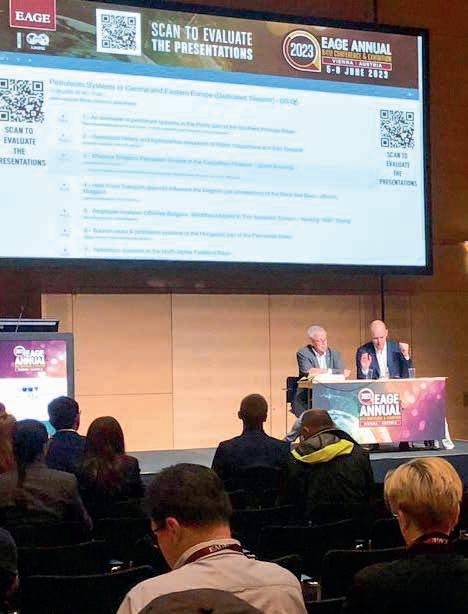
ozoic/Cenozoic PS and the Posidonia Shale – Mesozoic/Cenozoic PS occur in the western part of the NAFB. While the former contains gas and probably, the latter contains mainly oil. The Schöneck - Cretaceous/ Paleogene PS has a large extent covering the central and eastern part of the German sector and the Austrian sector of the NAFB. It contains mainly oil and to a lesser extent gas fields, which are characterised by a spatially uneven distri-
bution. This reflects lateral variations in the Oligocene source rocks as well as the effect of secondary alteration processes. Isotopically light gas, considered to be of microbial in origin, occurs east of Munich and forms the Oligocene - Oligocene/ Lower Miocene PS. Detailed investigations showed that the presence of pure microbial gas is rare and that most fields contain varying amounts of thermogenic gas migrated from the underlying Schöneck -Cretaceous/Paleogene PS.
The presentations emphasised well the diversity of the petroleum systems of Central and Eastern Europe, which were our main expectation as convenors. We enjoyed the session, our third on European petroleum systems after the session on North Western Europe in Amsterdam 2021, and the Mediterranean in Madrid 2022.
Keep up with the conversation by checking the session’s proceedings in EarthDoc and joining the Basin and Petroleum Systems Analysis Technical Community on LinkedIn at www.linkedin.com/ groups/8993221.
Researchers, practitioners, policy makers, and business stakeholders will gather in Paris, France on 14-17 November at the 4th EAGE Global Energy Transition Conference and Exhibition (GET 2023) to tackle urgent challenges and support the energy transition towards net-zero systems. 100+ presentations focusing on the skills and solutions to realise energy transition are expected.
The 3 rd EAGE Workshop on Fibre Optic Sensing for Energy Applications (15-17 November in Chengdu, China) delves into the latest advancements, innovations, and real-world applications of fibre optics sensing in the energy sector. 44 papers will be presented.
The 2 nd EAGE Workshop on Geothermal Energy in Latin America (15-17 November in Guanacaste, Costa Rica) is to share experiences and lessons learned during geothermal resources exploration, development and exploitation stages, in order to establish appropriate practices for commercial uses of geothermal resources in the Americas. The event features 31 presentations.
We bask in the knowledge expansion and renewed understanding of depth imaging this coming 21-22 November in Kuala Lumpur, Malaysia at the 2 nd EAGE Workshop on Quantifying Uncertainty in Depth Imaging. 22 papers will be available in the proceedings.
The 5th EAGE Conference on Petroleum Geostatistics (27-30 November in Porto, Portugal) offers an extensive programme with 73 presentations that will spark new waves of geostatistics capabilities addressing the challenges related to carbon neutrality and the energy transition, while leveraging on the strong expertise in petroleum geostatistics.
New issues of Geophysical Prospecting and Petroleum Geoscience will be published in November.

Geophysical Prospecting (GP) publishes primary research on the science of geophysics as it applies to the exploration, evaluation and extraction of earth resources. Drawing heavily on contributions from researchers in the oil and mineral exploration industries, the journal has a very practical slant. A new edition (Volume 71, Issue 9) will be published in November, featuring 14 articles. This is the Special Issue on ‘Advanced techniques, methods and applications for an integrated approach to geophysical prospecting’.
Editor’s Choice articles:
• A-posteriori insertion of information for focusing and time-depth conversion of Ground-penetrating radar data
— Persico et al.
• Augmenting and Eliminating the Use of Sonic Logs Using Artificial Intelligence: A Comparative Evaluation — V. Roy et al.
Petroleum Geoscience (PG) transcends disciplinary boundaries and publishes a balanced mix of articles that drives the science to enhance sustainable development covering all aspects of the petroleum system. The journal content reflects the international nature of the research. A new edition (Volume 29, Issue 4) will be published in November, featuring 9 articles.
Editor’s Choice article:
• New insights on the upper Silurian Fegaguira Formation shale-oil play in the Chotts Basin (southern Tunisia) — Anis Belhaj Mohamed et al.
The EAGE Near Surface Geoscience Conference in September in Edinburgh was a great touchpoint for our Association’s community to connect and explore new avenues of knowledge, collaboration, and engagement. We were particularly happy to welcome a large number of early careers and students, including a group from BGA’s Postgraduate Research in Progress meeting, which took place in the city around the same time.
For many of the youngest members in attendance, the event was a special one as it was their first platform to present their work to a large international audience. As well as a special poster session and opportunities to sign up as volunteers or participate in our mentoring programme, students were invited to join a dedicated exhibition tour. A group of exhibitors contributed to this activity with their time and expertise, providing students with a chance to chat with experts, try new equipment, learn about software options, and ask some burning questions on career paths. We hope this helped them orient their journeys onwards and thank all companies involved.
While in Scotland, we could not miss the opportunity to highlight the work of our local chapter based in Aberdeen. LC Aberdeen representatives provided a brilliant guide for members joining or connecting with the EAGE community in the country. You can join too and keep an eye on what they are doing next by following them via LinkedIn.

The event also explored a number of cross-sectoral applications, including under the umbrella of the 1st Conference on Sub-surface Characterisation for Offshore Wind. Another hightlight saw delegates invited to dedicated meet-and-greets with our technical communities, including the EAGE technical community on Decarbonization and Energy Transition, to learn about their projects and ways to get involved. If you are curious about what they are up to, make sure to connect. Other groups active in the Near Surface space that you may be interested in are hydrogeophysics, mineral exploration geophysics, geohazards, and UAV.
Our Near Surface Geoscience community is thriving across a vast multi-disciplinary landscape, and it is an exciting time to join. Take a moment to browse our technical communities to find groups that are relevant to you to hear about upcoming activities, access career development opportunities and forge new connections.
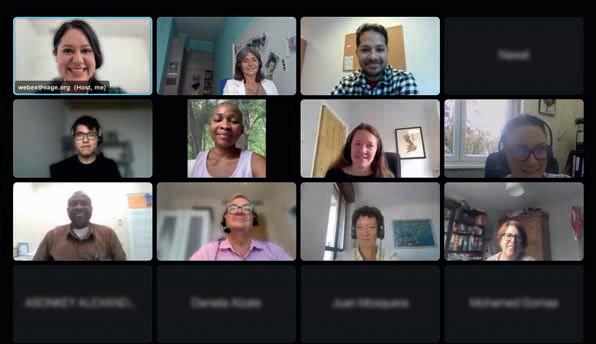
Wondering how to give a push to your career? Have you considered asking more experienced professionals for their guidance, or sharing your valuable knowledge with early careers? If you are not sure about joining a mentoring programme, here are three reasons why you should participate in our one-year professional development initiative.
First, you will widen your professional perspective by connecting with colleagues from different academic backgrounds and nationalities. Dr Gehrig Schultz (EPI Group, UK) recalls: ‘One of my mentees was very different from me: he came from another continent, he had just got his PhD, and English was his third or fourth language… It was inter-
esting because it was a big challenge. I learned so much trying to help and give him advice, as well as to understand his culture.’
Dr Schultz says he found great value in exchanging his experience with an enthusiastic young professional who provided him with fresh points of view and innovative ideas. That’s why he decided to continue with his contact. ‘We agreed that I will continue mentoring him. We are going to continue together, and see where it takes us… and I hope it takes us to a lifelong thing, that we can mentor each other for the rest of our working lives.’
During their conversations, mentors and mentees not only address career-related aspects but also work collaboratively to enhance each other’s personal development; this is the second reason to join our mentoring programme. Juan Manuel Jimenez, final year geology student from Universidad Nacional de Colombia (Colombia), has benefited from this approach. ‘It has been a very positive experience, because with my mentor we talked about a lot of topics both personal and academic. This year I had my first international experience, so she gave me some advice to get along successfully.’
Ruth Chigbo, a master’s student at the University of Bremen (Germany), started the programme establishing her
Calling all student chapters. We have a special offer for you. To kickstart the new academic year on a high note, EAGE is thrilled to offer 15 FREE student memberships to those student chapters that choose to renew their membership.
We are excited to extend this offer to all EAGE student chapters as we embark on a new academic year filled with opportunities for growth, learning, and collaboration. We take pride in fostering a global community of young geoscientists and engineers, and we want you to be a part of it.
goals and plans for the year. However, by February she was diagnosed with breast cancer that changed her priorities. She says one of the most important things during this process was ‘the possibility to share and open up to tell someone what I was going through: my mentor was there to listen to me and also gave me so many directions on how to overcome the challenge.’
Chigbo is from Nigeria and, unfortunately, her family was not able to accompany her during the treatment. ‘It was very difficult for me to do the treatment alone, but my mentor’s consistent counsel was really powerful… This mentorship is very dear to me because it didn’t just look into my professional life, but also into my personal circumstances: it was focused on healing and being resilient, to be able to walk through the situation I was living.’
Empathising with your colleagues’ experiences, motivations and goals leads to creating strong support networks, more than just extending your contact list.
You can sign up for the next EAGE Mentoring Programme until 17 November!
Students at the Federal University of Technology Akure, Nigeria told us: ‘We were inspired to form an EAGE chapter because we wanted to develop a new focus, something uncommon and non-existent in our school, i.e., a society that will put a strong emphasis on near-surface geophysics, geology, big data, AI, and GIS. We will frequently collaborate with other sister organizations as well as local and international chapters of EAGE’.
We encourage all EAGE Student Chapters not to miss this fantastic opportunity
to be a part of our dynamic community. Together, we can make a significant impact in the world of geosciences and engineering.

REPORT
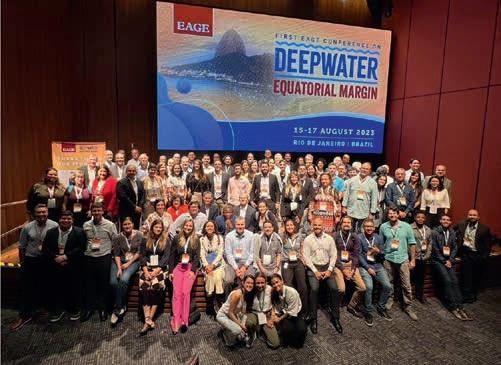

Two recent EAGE events in Latin America provided unique platforms for experts and professionals to delve deep into the world of offshore energy resources.
The beautiful city of Montevideo, Uruguay set the stage for the First EAGE Conference on South Atlantic Offshore Energy Resources. The three-day event was a resounding success bringing together more than 110 participants to explore a diverse range of topics.
In combination with a strong technical programme, the conference facilitated round table discussions, exclusive announcements by ANCAP, and participation through networking events. It was clear that the South Atlantic has an important role to play in providing future energy resources in an environmentally responsible manner and this event was designed to provide an ideal forum to define the best way forward.
The conference was sponsored by Chevron, TGS, Eliis, Apache Corporation, PGS, and CGG. Moreover, the unwavering support of our partners, ANCAP and ARPEL, played a pivotal role in ensuring the event’s smooth execution.
From 15-17 August, the vibrant city of Rio de Janeiro, Brazil, hosted the First EAGE Conference on Deepwater Equatorial Margin with over 175 participants. Oil and gas exploration, new technologies, energy transition, environmental challenges, and carbon capture were some of the topics discussed at the conference.
In this case Schlumberger (SLB), TGS, CGG, and Shearwater GeoServices support helped to create an enriching experience for all participants. Additionally, the contributions of the Sociedade Brasileira de Geofísica (SBGf) and the Agência Nacional do Petróleo, Gás Natural e Biocombustíveis (ANP), as support-
ing partners were instrumental in ensuring the event’s success.
The conference programme featured a wide range of topics, from geophysics to reservoir engineering, reflecting the depth and breadth of expertise present at the event.
The upcoming year will see some more exciting events in Latin America.
Investigate the oil & gas latest discussions in the Gulf of Mexico at the 3rd EAGE Workshop on Advanced Seismic Solutions in the Gulf of Mexico to be held in Mexico City. Join experts, researchers, and practitioners to discuss innovative Enhanced Oil Recovery (EOR) at the 3rd EAGE Workshop on EOR. Learn about the latest developments in pre-salt reservoir characterisation at the 4th EAGE Conference on Pre-Salt Reservoir in Rio de Janeiro. And there’s more to come!
For registration and further information, please visit eage.org/events.
Are you interested in being part of a technical community or engaged with your Local Chapter activities? By update your EAGE Affiliations you can be sure to stay connected top what interests you most.
As an EAGE member, you can best stay engaged with our geoscience and
engineering community by joining one or more EAGE Circles, being part of a Local Chapter in your location, or participating in our Technical and Special Interest Communities. That’s why we would like to invite all our members to take just a few minutes to update their
EAGE Affiliations. It also helps us to serve you better.
You can do so via the QR code or via a personalised link already sent to your email address.
Kevin Cuevas, president of the EAGE LC Mexico, writes: Last July, in the city of Villahermosa, our newly created EAGE Local Chapter Mexico launched its activities with a successful opening event attended by 80 earth science enthusiasts.
The session started with a formal introduction of the Chapter, the benefits
our members have access to, and the contributions we can offer to the Mexican geoscience and engineering community.
Two engaging technical talks followed: ‘Accelerating hydrocarbon discoveries with the prospectivity focused imaging methodology’ by Miguel Acosta Perez, solutions delivery lead at SLB, and ‘Digital Subsoil Analytics’
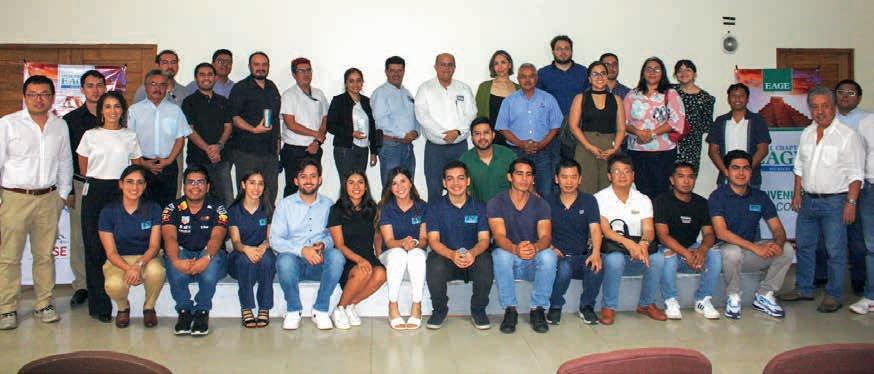
by Humberto Salazar Soto, president of the Mexican Association of Exploration Geophysicists AMGE (EAGE’s Associated Society).
In addition to the lectures, networking and professional connection spaces allowed participants to interact with experts, exchange ideas, and establish valuable connections for future collaborations and growth opportunities.
Overall, the event was an enriching and successful experience. We would like to thank EAGE, our sponsors (Engie and Vase), speakers, and attendees for their contribution to the success of this meeting.
Connect with the Chapter!
The upcoming EAGE Sub-Saharan Africa Energy Forum being held in Windhoek, Namibia in March 2024 stands as a natural progression from our previously successful regional workshop series, comprising the EAGE Eastern Africa Petroleum Geoscience Forum and the Western Africa Exploration and Production Workshop. This next event is not just a gathering, it is a platform for understanding the issues and finding solutions to the challenges that define Africa’s energy landscape.
Africa’s offshore and onshore energy reserves lie in wait, ready for discovery and development. The EAGE Sub-Saharan Africa Energy Forum serves to foster collaboration beyond the boundaries, within the workshop’s framework, participants can consider a diverse range of topics. These include exploring petroleum systems, evaluating plays and risk mitigation, examining key wells and projects in Africa, contemplating the role and future of frontier exploration, discussing

digitalization, new technologies, and data standards, assessing the geosciences’ role in the context of energy transition and the environment, and taking account of above-ground factors.
This is the moment to join us in uncovering the opportunities that lie ahead. You can submit a presentation abstract at: https://eage.eventsair.com/ eage-sub-saharan-africa-energy-forum/ abstract-submission-and-instructions.
Or scan the QR code!

To get a handle on industry efforts to harness geothermal energy, EAGE Local Chapter Paris arranged a dedicated event entitled ‘Geothermal Energy: A quick overview of today’, held at the Schlumberger (SLB) Research and Production Centre, Clamart (South of Paris), France in collaboration with SPE France and the SPWLA France Chapter.
Three short talks were delivered in the SLB auditorium with online broadcast, followed by a visit to SLB geothermal spin-off Celsius Energy. The installed demonstration geothermal system is fully functional and already
provides heating and cooling to one of the SLB buildings throughout the year.
The speakers for the presentation were Rebecca Bolton (CGG, UK), Chiaki Morelli (SLB, Japan), Alexandre Stopin and Camille Maurel (BRGM, France).
Bolton stated the necessity of a needs-based exploration approach in geothermal development. The exploration process should start with the question: What is needed here? She explained how the energy crisis has been one the main drivers for geothermal energy development in the UK shedding light on the challenging landscape marked by unclear legislation, lack of public awareness and long-term strategy, among others.
Morelli shared the results of a geothermal survey carried out in Japan (developed jointly by SLB and Idemitsu Kosan). Her case study demonstrated
a very advanced example of fracture analysis integrating borehole geology, acoustic and geomechanics for flow zone identification. Japan has a great geothermal potential although the current usage of this energy source remains relatively low.
The local representatives from BRGM showed the progress of deep geothermal exploration in France and described methods used in their case studies. The scheme for a multi-scale exploration programme from regional or basin scale to local scale and finally project scale was presented. The importance of the local regulatory authorities and developers regarding the scale shifts all the way up to field implementation were emphasised.
After the visit to the geothermal demonstrator hosted by Giovanni Sosio, participants enjoyed some refreshments and further animated discussion.
Did you know that each year you have supported the creation of free learning material? By being an EAGE member, you have encouraged the creation of several E-lectures, Distinguished Lecturer Programme (DLP) webinars, and How-to videos.
During 2023, a number of e-lectures were added to our platform, for example, the ‘Analysis of a local earthquake in the
streamers, is there potential?’ by Mark Thompson; or ‘The acoustic wavefield generated by a vessel sailing on top of a streamer spread’ by Stian Hegna. More e-lectures are still being produced and will be available soon.
More than that, by renewing your membership each year, you have also contributed to the creation of our How-to videos, a
delivering a successful presentation, or getting published. These are all available on the learninggeoscience.org platform and a new edition will also be available soon!
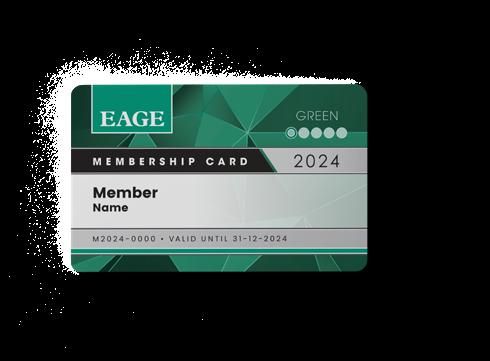
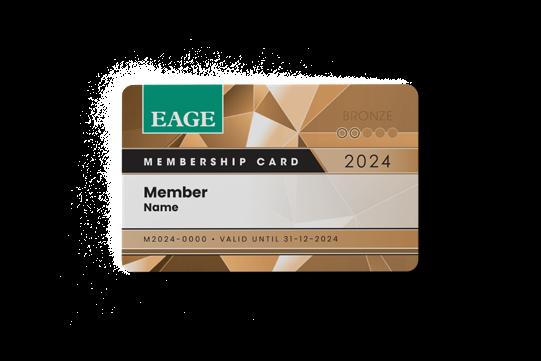
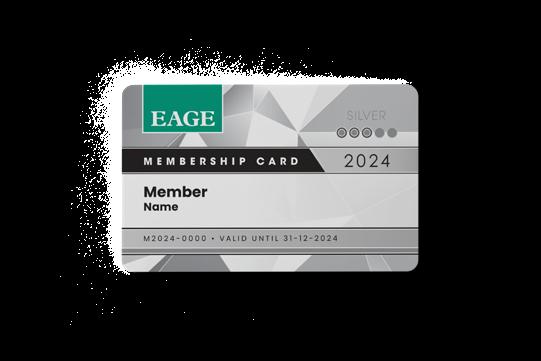
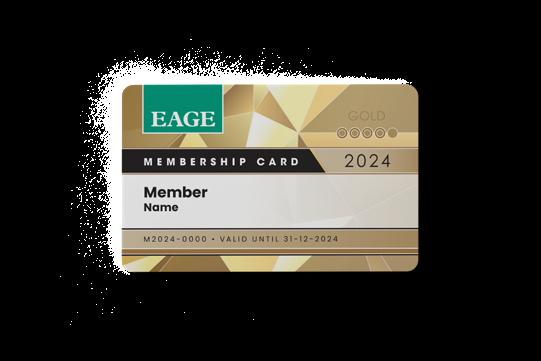

Being part of the EAGE Community means getting access to a wide range of benefits and opportunities, but also supports the creation of relevant and accessible content on specialised topics. Renewing your membership early also ensures your uninterrupted engagement with the Association and greater benefits through the recognition programme.
For those who are not a member yet, we would like to invite you to take advantage of the special offer where you get the remainder of 2023 for free if you become a member now. We look forward to welcoming you to the EAGE community in 2024.

Rafael Valadez Vergara, PhD student at University of Miskolc, Hungary talks about how he benefited from student chapter activities.

In 2019, while pursuing graduate studies in Earth Sciences and Engineering, I discovered something that would change my academic and professional journey: the European Association of Geoscientists and Engineers (EAGE). This discovery set me on a path of inspiration, growth and community.
I first learned about EAGE through my professors, Joining the EAGE Student
geosciences. I was thrilled to be part of the University of Miskolc’s EAGE Student Chapter, Hungary’s first and only chapter since 2012.
In 2021, I became the president of the Chapter. My mission was to promote knowledge, research and community within our university and beyond. Since then, the chapter has grown significantly, organising monthly events and workshops, inviting professionals from the industry to speak about the state of the art in earth science topics. I focused on building connections across Hungary and around the world, fostering a sense of community growth and shared passion for learning. In 2022-2023, we were recognised as the best and most active student chapter in Europe.
One of the highlights of my time with EAGE so far was winning the Laurie Dake Challenge in 2022. Our chapter team tackled a real industry project from Repsol, conducting project assessment, data analysis, and decision-making like seasoned professionals. Our victory earned us a €2000 prize and passes for the 2022 EAGE Annual Conference & Exhibition in Madrid, Spain.
Our chapter has also excelled in the Online GeoQuiz, consistently placing in the top three since 2021. This provided us with free access to the EAGE Annual Conference & Exhibition, where you can also attend workshops, short courses, and field trips to learn about the

latest developments in geoscience and engineering.
Moreover, being part of EAGE provided numerous opportunities for personal and professional development. The EAGE Mentoring Programme connected me with experienced mentors in the earth sciences field, whose guidance and wisdom were invaluable.
In 2023, I attended the EAGE Annual Conference & Exhibition in Vienna, Austria where the focus was on sustainable energy and energy transition. For me, it was inspiring to see how our field is shaping the future.
In addition to the numerous opportunities and benefits of being part of an EAGE Student Chapter, student membership also provides great discounts on conferences. For example, as an EAGE student member, I attended the Near Surface Geoscience Conference & Exhibition 2023 in Edinburgh, Scotland in September as a presenter.
I would like to encourage fellow students and future geoscience leaders to join EAGE and its student and local chapters worldwide as hubs of creativity, ideas, and team spirit. Members have the opportunity to meet like-minded individuals, collaborate on projects, and build lasting connections.
Also, I should mention the EAGE Student Fund which provides support for students through grants and scholarships. Contributions to the Fund is investing in the next generation of geoscience pioneers.


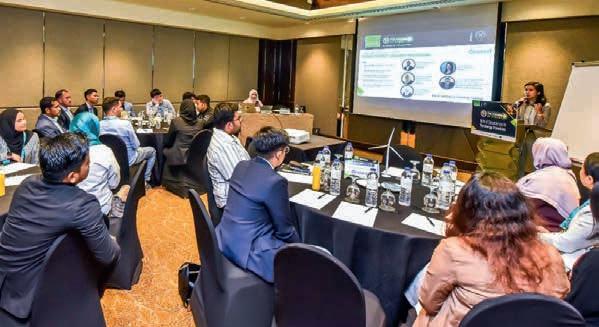
EAGE is playing its part in preparing the next generation for the energy transition. For example, this month’s major EAGE’s Global Energy Transition Conference (GET2023) in Paris is due to reflect on the key role younger members in our community of geoscientists and engineers will play in the coming decades.
In an effort to inspire the next generation of leaders, the winning team of the 2023 Minus CO2 Challenge will be invited to present its project as part of the Conference’s Strategic Programme. The students will showcase their innovative ideas for generating ‘Renewable Energy with Compressed Air Energy Storage in Carboniferous Salt Caverns at Cumberland basin, Nova Scotia, Canada’, demonstrating how fresh perspectives and solid

technical knowledge can contribute to a more sustainable future.
Building successful careers in a net-zero scenario were addressed last September at the Future Energy Leaders (FEL) programme, held at the EAGE Conference on the Future of Energy. Participants included Sarah Marzuki, the FEL sponsor representative from Ørsted, and Mohamad Rizam Sarif from PETRONAS who delivered a keynote presentation entitled ‘Essential skillset for future energy leaders’.
Sarif’s talk was followed by a onehour mentoring session, in which the attendees could ask for advice on a wide range of topics from the roadmap of carbon capture and storage and the potential of geothermal energy, to empowering
women in geoscience and engineering, and the challenges faced by the energy transition workforce.
Around 50 young professionals and students benefited from the programme’s valuable insights on the challenges of the energy sector, as well as from the opportunity to learn, network and engage in debates with fellow peers who are equally eager to make their mark in the future energy landscape.
If you are a young professional attending GET2023, we encourage you to make the most of your experience by breaking the ice into new conversations, reaching out for new contacts and letting us know if you’d like to take an active role in the community, for example, with Young Professionals or the Decarbonization and Energy Transition Communities.
The EAGE Student Fund supports student activities that help students bridge the gap between university and professional environments. This is only possible with the support from the EAGE community. If you want to support the next generation of geoscientists and engineers, go to donate.eagestudentfund.org or simply scan the QR code. Many thanks for your donation in advance!

Chris Leech is a familiar figure in the near surface geoscience community in the UK and further afield having served on various industry committees. He is a director of geophysical equipment and services company, Geomatrix Earth Science, which he co-founded after several years representing various geoscience companies, notably US company Geometrics. Local politics and endurance sport also keep him occupied.
Chris Leech
North country background
I was brought up in the Yorkshire Pennines, in northern England, in some really lovely countryside. I developed a love of mountaineering and rock climbing at high school. This gave me my first close-up experiences of rocks.
Geoscience inspiration
High school teachers: we had a great physical geography teacher who got me really interested in rocks and the landscape, as well as an inspirational physics teacher who was also a mountaineer. When I embarked on further education at the geology department at Exeter University (now defunct), it seemed natural to combine the study of physics with my love of rock climbing. So geosciences was the natural choice.
Setting up on your own
I was an international sales agent for Geometrics when in 1993 Tom Nicols, an engineer, and I spotted an opportunity to found our own business, Geomatrix, the name providing some continuity with our previous work. We expanded considerably with the purchase of Earth Science Systems in 2001, and now in 2023, we are still successful mainly supplying equipment and consultancy. Our company ethos is not to be focused on one market sector, but staying within near-surface geophysics, allowing us to ride economic peaks and troughs.
Some surprising projects
Fresh out of university I was let loose with ground penetrating radar (GPR), a
very novel technique in those days. A memorable project involved looking for evidence of back-filled shafts used in the construction of canal tunnels in the late 1700s but a modern safety hazard for a restoration project. As the shafts got backfilled with more of less the same material as was initially excavated, this posed a particular challenge. GPR proved itself, and we located several shafts, providing an example of tying a modern civil engineering concept with industrial archaeology. On another occasion, we had to search for evidence of tunnels at Bletchley Park, the WWII code-breaking centre, NW of London, rumoured to link the centre with the nearby railway station. Despite use of multiple techniques nothing was found, a relief to the site owners of an intended development project.
After the Falklands war in the early 1980s, locating non-magnetic anti-personnel mines was a priority for the British armed forces. GPR seemed the obvious choice and I was assigned to work on the feasibility with the military research agency. Unfortunately, whilst we could locate newly laid mines, the effects of rain consolidating the peat soils around the mines made them virtually undetectable after only a few weeks. Fast forward a few years, the same research agencies wanted to use GPR in a military context to locate voids and munitions hidden below concrete floors. Improved technology meant this time we were much more successful.
These days the focus is much more on locating marine UXO during offshore wind farm site investigation. Here we are supplying arrays of closely spaced magnetometers as detection tools. Luckily, these World War II UXO tend to be largely magnetic.
I am a firm believer in giving something back to the industry. I have sat on various committees, often as chair, throughout my career e.g., European GPR Association, Near Surface Geophysics Group (GeolSoc London) and the International Society for Archaeological Prospection, plus numerous event organising committees. This contributes to the running of the geophysics community, and often enables others to prosper in their careers.
As a local parish councillor in my village for 13 years, I am proud that through this voluntary work at the lowest level of British politics we are able to provide everyone with local services. This includes a mandatory commitment to keeping the local church clock in working order!
I have been a keen sportsperson all my adult life, initially playing field hockey and climbing of course. More recently I found my calling in triathlon, representing GB at international events and ultra-distance running. I am a firm believer in the ‘use it or lose it’ concept, especially as we get older.




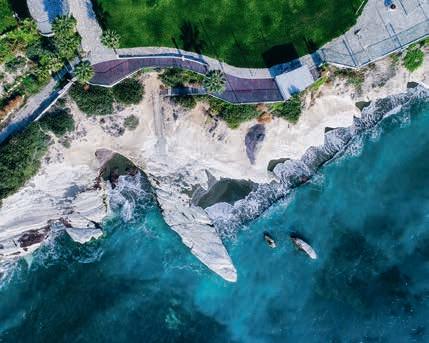















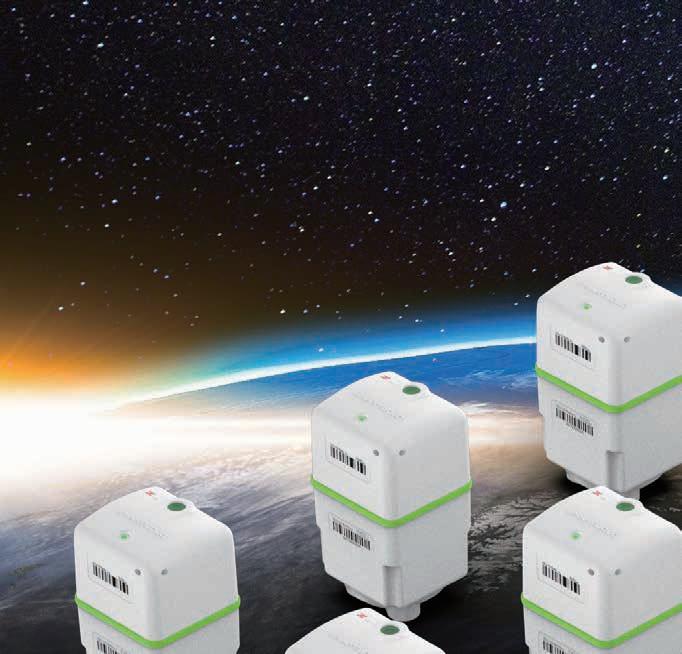
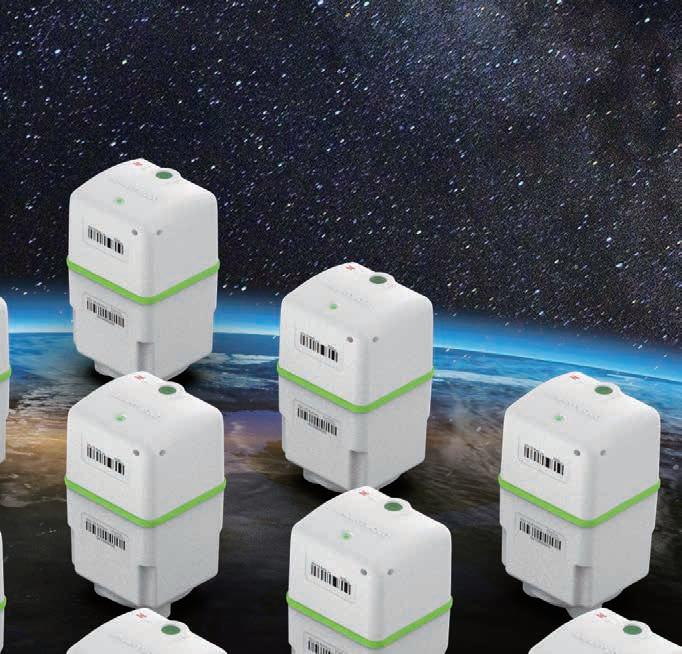






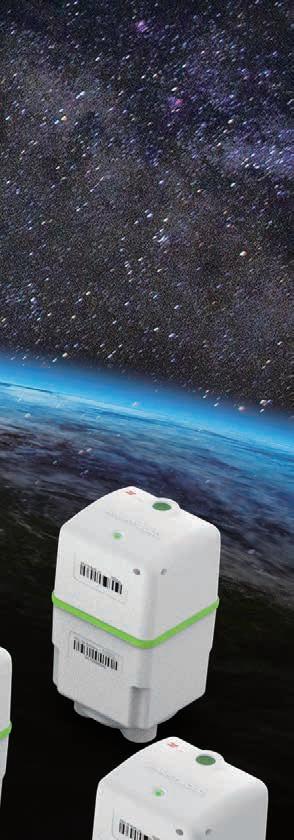


BY ANDREW M c BARNET

The obvious reaction to the TGS agreed takeover of PGS, subject to the usual regulatory rigmarole, is that the marine seismic industry does not have a good history when it comes to company mergers. In other words, the question is how will this be any different?
In the last several decades there has been no single deal of this scale in which the protagonists have ended up with a consistently profitable, let alone more profitable, venture. No need to labour the point, but the list of casualties includes one-time titans of the marine seismic business such as Halliburton Geophysical Services (HGS), CGG and of course the biggest of them all, Schlumberger. At one point each of these companies by virtue of acquisitions could boast ownership of the largest fleet of seismic vessels in the world with the expected benefit of market dominance. In every case initial hopes were dashed.
After several consolidations HGS was effectively absorbed into the Schlumberger conglomorate that built its presence in the market with names of the past such as Seismograph Service, Geco-Prakla, and Western Atlas. But in 2018 Schlumberger threw in the towel and sold off its fleet to a new enterprise Shearwater GeoServices, now the biggest in the business. WesternGeco continues only as a geophysical data services division in the Schlumberger empire. CGG, notable for its major acquisitions over time of VeritasDGC, Wavefield and Fugro’s geoscience division followed Schlumberger’s example in ditching its vessels in a sell-off to Shearwater.
by the ship-owning community. This persistent over supply has often been exacerbated by opportunistic investors able to enter the fray when the good times were rolling. The outcome has been more or less constant pressure on survey prices. Oil companies needed no encouragement to exploit this situation, so boom times for contractors needed a lot of factors in their favour and didn’t last long.
The higher tech marine geophysical companies clung to the mantra that the industry would pay a premium for better survey data acquired with innovative technology. That sometimes paid off in the short term. For example, PGS stole a lead for a while with its revolutionary broadband acquisition solution but the competitors soon came up with their own offerings able to achieve comparable results. When Schlumberger quit the field, the company made clear that the cost of research to separate itself from the herd with more sophisticated techniques could not be justified. The company was scarred by massive spending on the undoubtedly superior IsoMetrix and the ‘Q’ point-receiver marine, seabed and land systems that it was unable to recoup. Disappointingly, customers were prepared to settle for a less costly service.
‘Basic flaw in the business model …’
The common denominator in this saga of company misfortune is the apparent impossibility of owning and managing vessels as a viable long-term business. Although the reasons for this are well understood, there are still those willing to try and defy the odds.
The basic flaw in the business model that brought all the mentioned companies down, as well as many other smaller fry, has been the unavoidable overhead of maintaining a seismic vessel fleet while subject to the oil company exploration cycle causing excessive fluctuations in demand for surveys. But that is only part of the story. The market has always been highly competitive, stoked
Every significant past merger of marine geophysical contractors has in effect been a defensive consolidation with the forlorn hope of bringing some discipline to the market. That is not the case for TGS. Up to now, it has survived the many vicissitudes of the market by staying out of the vessel-owning business by adhering to an asset-light strategy focused on multi-client business and making itself one of the best customers for vessel providers. There was a rare blip in 2007-8 when TGS-NOPEC (as it was then) made a contentious bid for Wavefield-Inseis, an ambitious Norwegian interloper. This was mainly a move to secure vessels for its multi-client business during an upturn in the market which soon dissipated. Amid recriminations, the deal never went through leaving the door open for CGG in its expansionary days to acquire Wavefield-Inseis at a substantially lower price. In subsequent years TGS management would admit that it had dodged a bullet when its bid failed.
Why, then, has TGS decided to revisit the idea of vessel-ownership? According to company CEO Kristian Johansen, it’s all different this time around. The market has changed, he says, and that is true in terms of numbers in the game. Where there were once 65 available seismic vessels in the market with 8-10 providers, only 16-17 vessels are now in operation coming almost exclusively from Shearwater and PGS (currently with seven).
The limit of choice and availability would clearly be a concern for TGS multi-client business although the company has a multi-year vessel supply agreement with Chinese vessel owner COSL. But potential lack of vessels for business including seabed seismic was apparently not the main worry. A little surprisingly Johansen acknowledged that the future of multi-client business is far less secure than in the past. The business is a third of what it used to be 10 years ago. He did not dwell on the reasons at the presentation of the TGS-PGS deal in September. However, it is probably safe to assume that the opportunity for speculative old-style streamer-based exploration surveys will be limited in the transition era. It is often asked how much more new seismic data is needed, especially as today’s reprocessing techniques can provide previously unimaginable results. As a trend, oil companies are focusing more on exploiting their known reserves with less incentive for cost-sharing multi-client.
In fact, TGS has already latched onto the emerging interest in multi-client over-shooting of existing surveys with ocean bottom node seismic, notably in the North Sea and Gulf of Mexico, to reveal potential pockets of oil and gas missed by legacy towed-streamer surveys. This was one of the reasons for the purchase of Magseis-Fairfield, finalised earlier this year, although that acquisition again raised the question of owning hardware rather than renting. TGS also stated it wanted to participate more in reservoir imaging of existing structures which is a growing area of the seismic market not suitable for the multi-client business model.
during an upturn for the marine seismic business. PGS shareholders should obviously be pleased with what amounts to a rescue (at a premium on share price) from what has been a dark place with countless refinancing manoeuvres to stay alive.
TGS is now fully exposed to the notoriously fickle marine seismic market with the task of turning PGS and MagseisFairfield into profitable enterprises. It also has to work with a sizeable inherited debt, not part of its previous modus vivendi. TGS management seems confident that its traditionally strong balance sheet and cost control will see them through.
For the time being at least, work for the PGS fleet seems reasonably secure. The Ramforms have a good operational record, although are not always flexible to meet some oil company needs, and are reputedly expensive to manage. Worldwide coverage with so few vessels is also an issue. On the plus side, oil company clients are getting used to having to choose between the PGS and Shearwater offerings as the only ones available for most international operations.
‘Exposed to the notoriously fickle marine seismic market’
The OBN market could be a different matter. Here TGS is on its own so to speak as PGS never showed serious interest in seabed seismic. A recent tie-up with the inApril Norwegian seabed node manufacturer indicated a possible change of heart, but this will doubtless be shelved. The possible issue for TGS is that OBN looks to be a very competitive market with several existing players in the node manufacturing and operating business. The cost of entry is inexpensive compared with prohibitive for towed-streamer and the scent of money to be made is stimulating plenty of new concepts that could challenge the existing technology.
Business analysts are often sceptical about promised synergies between merging companies and their cultures. This should not be much of an issue. Both companies are in proximity of each other in Norway and have worked on joint projects over the years, offshore Canada and Malaysia among other regions.
Rationale for the PGS takeover in the TGS official statement is what you would expect. It included a desire to create a stronger and more diversified geophysical company and data provider to the energy value chain, driven by technology and innovation. The combined entity would offer a robust position in all verticals including multi-client, acquisition, imaging and new energy. There was mention too of significant economies of scale with a preliminary estimate of more than $50 million annually in cost synergies.
The conclusion would seem to be that TGS felt the only way ahead was to form an entity able to fully participate in every aspect of the marine seismic business. This was no sudden decision. Johansen said the journey had started in 2019.
It is said that fortune favours the brave but the attendant risks of this strategy are clear. TGS is moving into increasingly unknown territory. Like most deals of this kind, it has been sealed
There is also surprisingly little overlap in the operations of the two companies. The multi-client coverage is a very good fit with PGS strong in Europe, the Mediterranean and NW Australia. There is complementary library offshore Africa and the Middle East while TGS is well represented offshore Brazil (thanks to its acquisition of Spectrum) and the Gulf of Mexico. The data processing side may a bit of a moot point. TGS added some extra expertise when last year it bought the data processing and imaging business of ION Geophysical in a sell-off package which also included the company’s offshore multi-client data library. PGS has traditionally mainly confined its processing to data acquired by its own vessels.
Ironically, the TGS-PGS combination turns out to be a defensive consolidation, an agreement to work together to secure a substantial share of the available market, not likely to grow as the impact of energy transition makes itself felt.
Views expressed in Crosstalk are solely those of the author, who can be contacted at andrew@andrewmcbarnet.com.
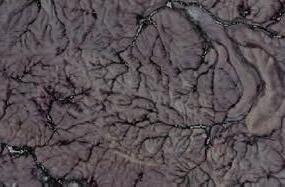




























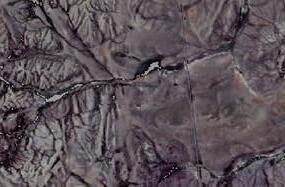

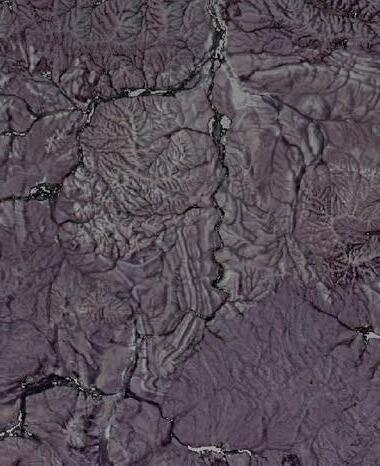
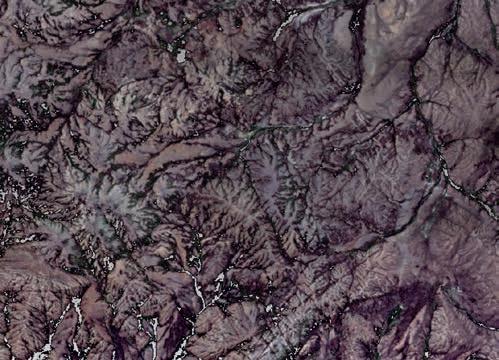


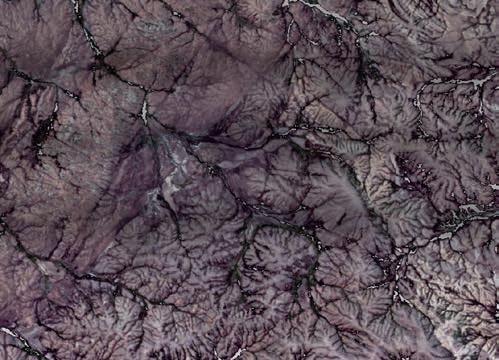




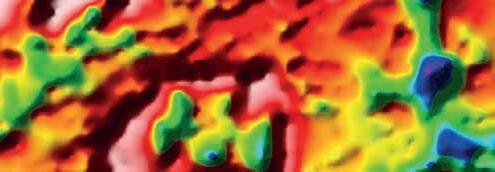

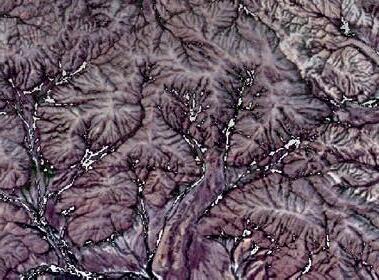

Our innovative airborne geophysical technologies allow for efficient exploration reducing environmental impact

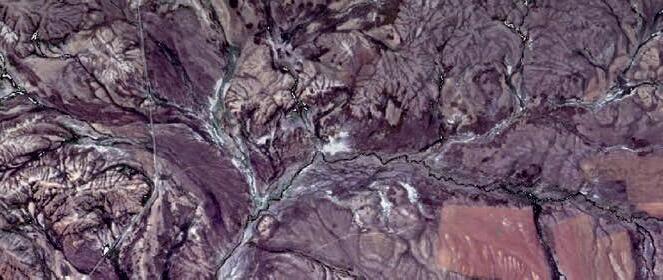







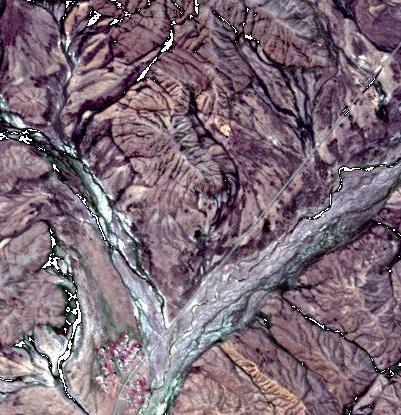







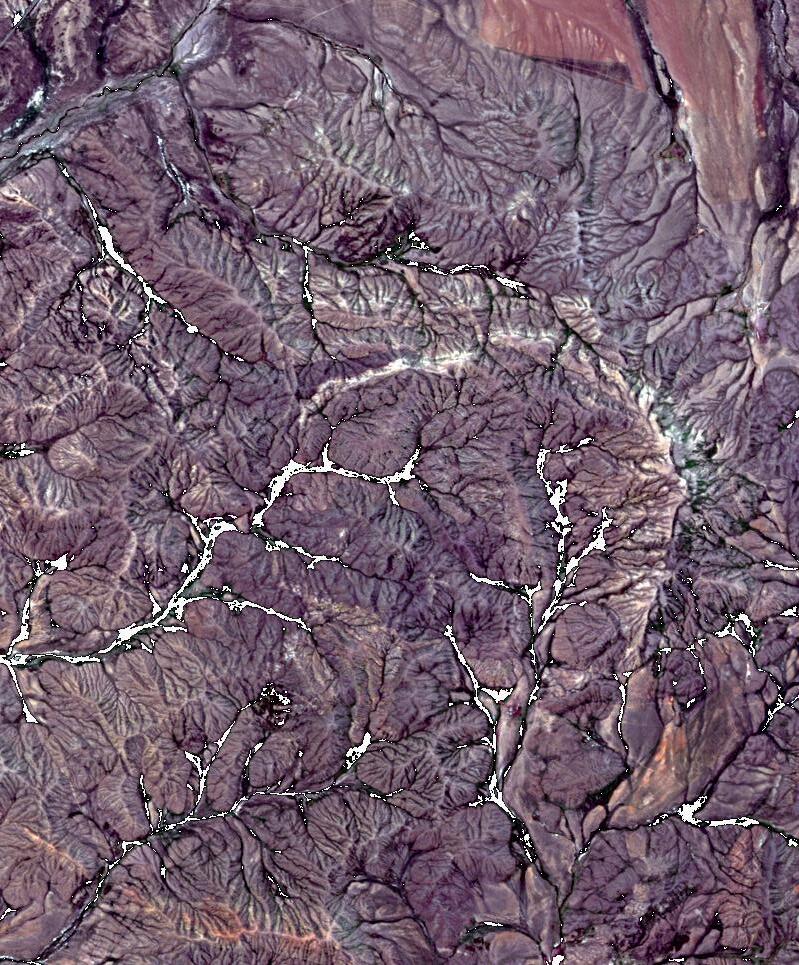



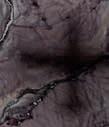






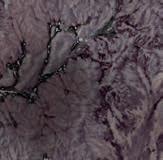





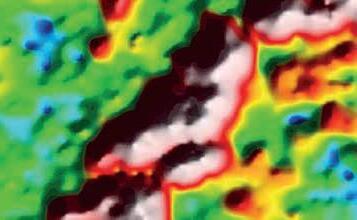




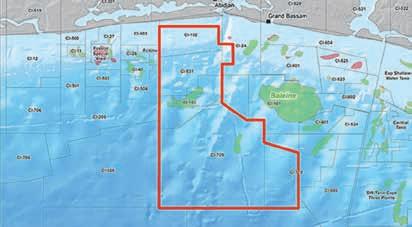
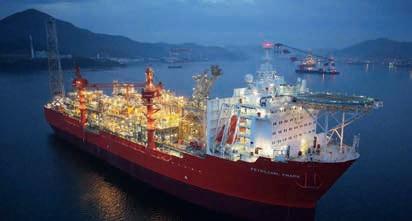

TGS and PGS have agreed the principal terms of a merger to create a $2 billion ‘geophysical powerhouse’.
After the all-share transaction, TGS shareholders will own approximately two thirds of the combined company and PGS shareholders will own the remaining third on the basis of the share capital of each company on 15 September 2023. TGS CEO Kristian Johansen will be CEO of the combined company and TGS CFO Sven Børre Larsen will continue in his role. The combined company will be called TGS and the PGS brand will cease to exist.
Chris Finlayson, chair of the board at TGS, said: ‘It will combine the capabilities of both companies to create a geophysical powerhouse. The transaction
continues TGS’ strategic development from a pure multi-client seismic company to the leading acquirer and provider of geophysical data to both the oil and gas and new energy industries.’
Binding agreements were expected to be entered into in October 2023, with the transaction to close during the first half of 2024, subject to certain conditions.
‘The transaction establishes a full-service geophysical data company with a strong offering in all segments, including multi-client data, streamer data acquisition, ocean bottom node (OBN) data acquisition, imaging and new energy data,’ said a joint statement from TGS and PGS. ‘The transaction helps to mitigate supply chain risks and will add further economies of scale and efficiency, enhancing the value offered to clients.’
In multi-client, the combined company will offer customers a global seismic library with data from all active basins in both the western and eastern hemispheres. For streamer acquisition, it will hold an operational fleet of seven 3D data acquisition vessels, and for OBN acquisition, it will benefit from around 30,000 mid and deepwater nodes. In addition, the combined company offers growth opportunities in new energy with complementary technology offerings for carbon capture and storage (CCS) and offshore wind, said a joint statement. The merger will also lead to annual cost synergies of $50 million.
‘Bringing together two distinct, yet complementary, companies positions us
even better for a continued upcycle in the energy sector’, said Kristian Johansen, chief executive officer of TGS.
Rune Olav Pedersen, president and chief executive officer of PGS, said: ‘The seismic industry is changing whereby production seismic is becoming increasingly important alongside the traditional exploration seismic. By combining TGS and PGS’ complementary resources, we are creating a fully integrated geophysical service provider well positioned to generate significant value.’
The company will have a combined market cap of $2.616 billion and a net interest-bearing debt of $649 million (2Q 2023). It will optimise its capital structure to refinance PGS’ $450 million senior notes and the term loans.
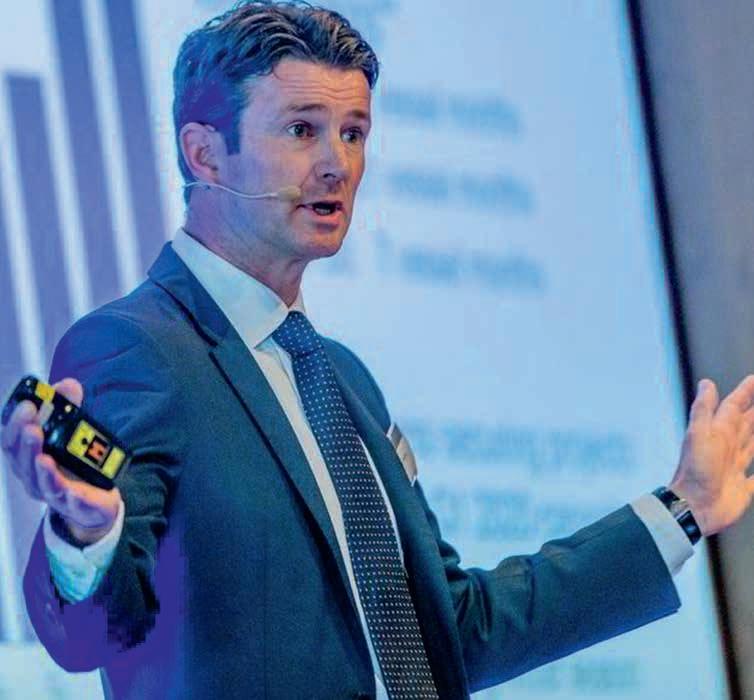
The equity value of PGS is $850 million, corresponding to a price per share of $0.98. This represents a premium, of 20.7% to PGS closing price on 15 September 2023.
The transaction remains subject to due diligence by both parties, finalising and executing a definitive merger plan, as well as customary closing conditions such as relevant regulatory approvals and consents and expiry of statutory waiting periods and ‘no material adverse change occurring’. Extraordinary general meetings in both TGS and PGS must also approve the deal with at least a two-thirds majority. Closing of the transaction is expected as soon as possible thereafter.
News of the merger emerged before PGS released disappointing revenue guidance for the third quarter with estimated IFRS oncome of $141 million, compared to $198.5 million in Q3 2022 and produced revenues of $168 million, compared to $216.5 million in Q3 2022.
Contract revenues ended at approx. $36 million in Q3 2023, compared to $100.7 million in Q3 2022. Multi-client late sales revenues were approx. $24 million in Q3 2023, compared to $71.8 million in Q3 2022.
‘Q3 multi-client late sales ended below our expectations, even if partly balanced by approx. $14 million of sales of data late in the processing phase, which is reported as pre-funding,’ said PGS CEO Rune Olav Pedersen.
Meanwhile, TGS expects IFRS revenues for Q3 2023 of $225 million, compared to $135 million in Q3 2022. POC revenues are expected to be $293 million, up from $119 million in Q3 2022.
POC multi-client revenues are estimated at $160 million, of which early sales of completed data accounted for approx. 55%. In Q3 2022, POC multi-client revenues were $103 million, of which 37% was made up by early sales. Proprietary revenues are estimated at approx. $133 million in Q3 2023, compared to $16 million in Q3 2022.
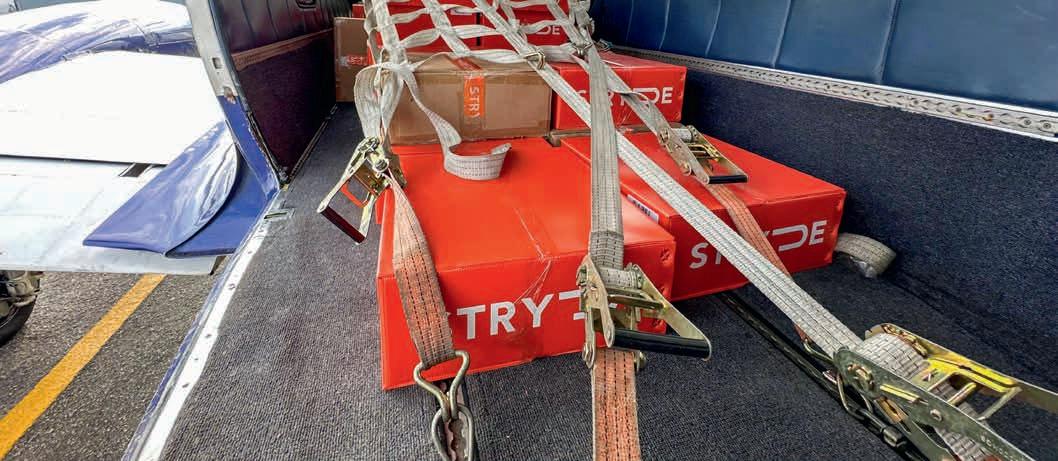
Stryde has supplied geoscience company Explor with 26,370 nodes to enable a series of carbon capture and storage (CCS) projects in Brazil.
The projects, which mark the first time that Stryde’s seismic sensor technology has been used in Brazil, were commissioned by bioenergy companies specialising in ethanol production from agricultural sources. The primary objective is to identify suitable geological formations for carbon storage. By sequestering carbon emissions resulting from the fermentation process deep underground, proponents aim to make the resulting bioenergy production carbon negative.
The series of surveys includes two separate projects in Brazil, whereby Explor is conducting two 3D surveys totalling over 100 km2, near existing bioenergy facilities.
During the surveys, Explor will acquire high-resolution seismic data using Stryde’s nodes to help its client understand the suitability of the subsurface for permanent geological storage of CO2 and to identify optimal well locations.
Mike Popham, Stryde CEO, said: ‘Our low-cost nodal sensor enables the rapid acquisition of high-resolution seismic data that multiple industries need to explore for new energy sources, to decarbonise, and to derisk projects. Due to the node size, it requires smaller crews, fewer logistics, and less heavy vehicles which allows further cost savings and efficiency gains, while drastically reducing land disruption and
environmental footprint on a seismic survey – making seismic data affordable for emerging industries like onshore CCS.’
The surveys will combine ISSN source methodology with Explor’s IntelliSeis acquisition management system. Explor’s proprietary Pinpoint source technology will be combined with Stryde nodes to deliver high-density seismic data with near-zero environmental footprint, said Stryde.
Air-freight delivery of the nodes into Brazil enabled Explor to deliver the largest seismic nodal project to date in Brazil.
Allan Châtenay, president at Explor said: ‘Having now worked with Stryde on more than 25 projects across the globe, we’re very confident in its technology’s capabilities and ability to deliver the equipment needed, with a quick turnaround like this.
‘The set-up of a new entity in Brazil, employment of a local team, and the use of Stryde enables us to deliver much higher trace densities within the budgets established by our clients. Perhaps most importantly for Brazil, the extremely light and compact design of the node supports our near-zero-environmental footprint operations – a critical aspect of working in Brazil. Together with our low-environmental impact PinPoint seismic source, we can deliver high-density 3D seismic data with a near-zero footprint. We’ve even moved significant numbers of nodes by air freight between projects, allowing us to optimise efficiency for our end client.’
Norway is making almost 6000 data sets from relinquished areas in the Norwegian Continental Shelf freely available to the public. This is in addition to 30,000 data sets released in the past year
‘These 6000 new data sets (well data) are from areas on the Norwegian shelf that have been relinquished. In order to ensure circulation of acreage and more efficient exploration, it is important that these data sets are quickly made available to other companies that could identify new opportunities,’ said the Norwegian Petroleum Directorate.
The expression ‘interpreted data’ has been clarified in the NPD’s latest guide-
lines. Such data were previously held confidential for 20 years, but this period has now been reduced to two years. Interpreted data from relinquished areas can be released after one year.
‘We want the acreage to circulate, so it’s important for us to provide rapid access to data. We want other companies to take a fresh look and review the opportunities. We hope that the reuse of data from other companies will avoid some duplicated efforts,’ said Elin Aabø, acting project manager for Diskos.
The vast majority of this data can be found in Diskos, Norway’s national data repository.
Shearwater GeoServices has completed a carbon storage survey project for TotalEnergies in an area of the Danish North Sea where Total won a storage licence in February.
In the last two years Shearwater has secured several seismic acquisition contracts for storage acquisition projects
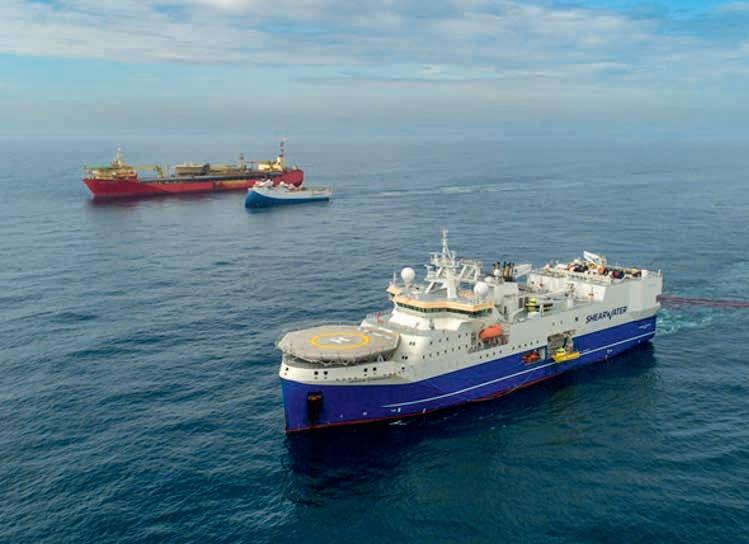
across multiple countries. ‘The projects have been diverse and required different solutions to achieve the high-resolution imaging needed for evaluation of res-
ervoirs for storage application,’ said the company in a statement. ‘Shearwater has successfully utilised hybrid methods with both towed streamers and nodes, new acquisition geometries and worked closely with third party bathymetric service providers for high-resolution data to analyse the seabed and shallow geology in shallow water environments. In addition to acquisition, Shearwater has secured several projects processing and reprocessing data for storage applications.’
Meanwhile, Shearwater has formed an alliance with marine robotics and digital solutions provider Argeo aimed at developing ocean bottom nodes solutions. Irene Waage Basili, CEO of Shearwater, said: ‘This alliance between marine seismic and subsea will push the boundaries of the rapidly growing OBN market. Argeo is a strong and respected partner with unique technology and competencies which will help to accelerate the development of new OBN deployment vehicles and methods.’

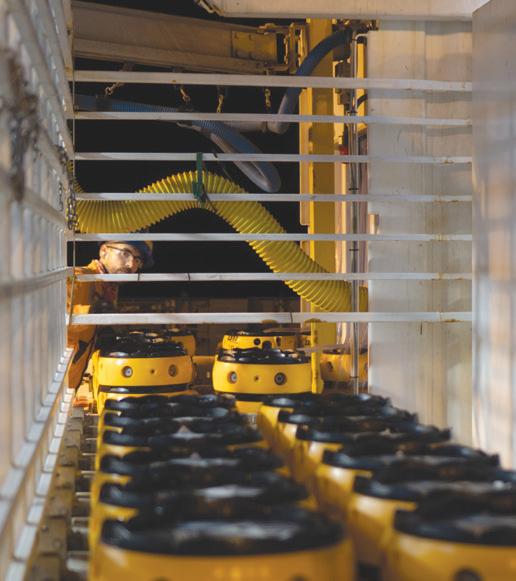
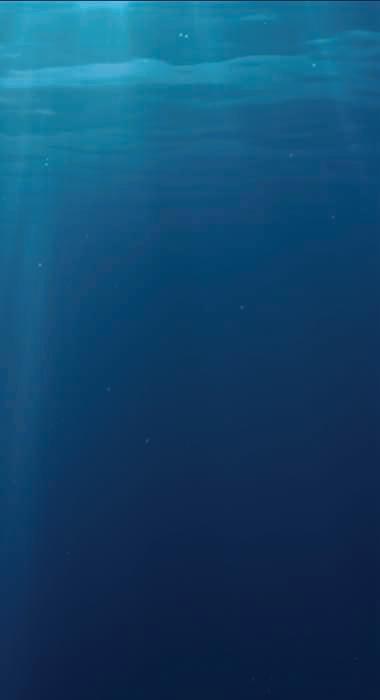
it comes to ocean bottom nodes, experience matters. Choose an OBN partner with a track record spanning over 130 surveys.

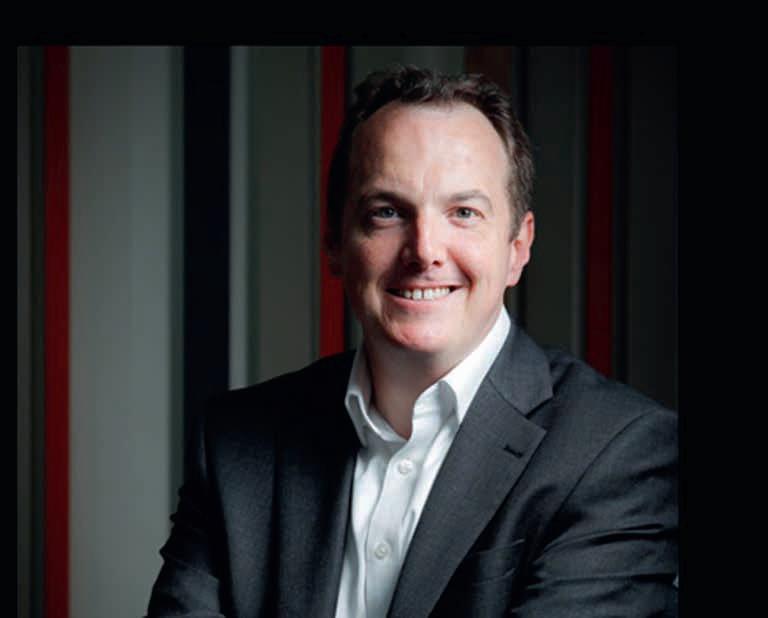
Shell, bp, Perenco, Crysysaor, Neptune, Enquest and Eni are among companies to be awarded licences after the UK’s first carbon storage licensing round.
The UK North Sea Transition Authority (NSTA) has awarded 14 companies 21 licences in depleted oil and gas reservoirs and saline aquifers which cover around 12,000 km2 The locations could store up to 30 million tonnes of CO2 per year by 2030, approximately 10% of UK annu-
al emissions which were 341.5 million tonnes in 2021.
Shell, Perenco and Eni have won licences off the coast of Norfolk in sites which could form part of the Bacton Energy Hub – a carbon storage, hydrogen and offshore wind project, which could provide low-carbon energy for London and the south east of England.
Other locations include sites off the coasts of Aberdeen, Teesside, and Liverpool.
Stuart Payne, NSTA chief executive, said: ‘Storing carbon dioxide deep under the seabed will play a key role in hydrogen production and energy hubs. We will continue to work with industry and government to enable further licensing activity and back the UK’s drive to net zero emissions.’
It is estimated that as many as 100 storage licences will be needed to meet the requirements for reaching net zero and the volume of applications received for the first round demonstrated the industry’s desire for further opportunities, said the
NSTA. It will assess the response and the quality of opportunities in locations across the UK before deciding when to run a second round.
Six licences have already been granted by the NSTA and the UK government recently announced £20 billion funding for the progression of these existing projects. Two locations, Hynet and the East Coast Cluster, have been selected as Track 1, while Acorn and Viking CCS projects have been chosen as Track 2 clusters.
Lord Callanan, minister for energy efficiency and green finance, said: ‘The UK has one of the largest potential carbon dioxide storage capacities in Europe, putting us in prime position to be world leaders in carbon capture – which is why we’ve committed an unprecedented £20 billion to develop the early stage development of carbon capture, usage and storage (CCUS).’
The UK government is targeting carbon storage of 20-30 million tonnes of CO2 emissions per year by 2030, and over 50 million tonnes by 2035.
CGG has announced the start of a large multi-client 3D PSDM reimaging program in the Tano Basin offshore Côte d’Ivoire.
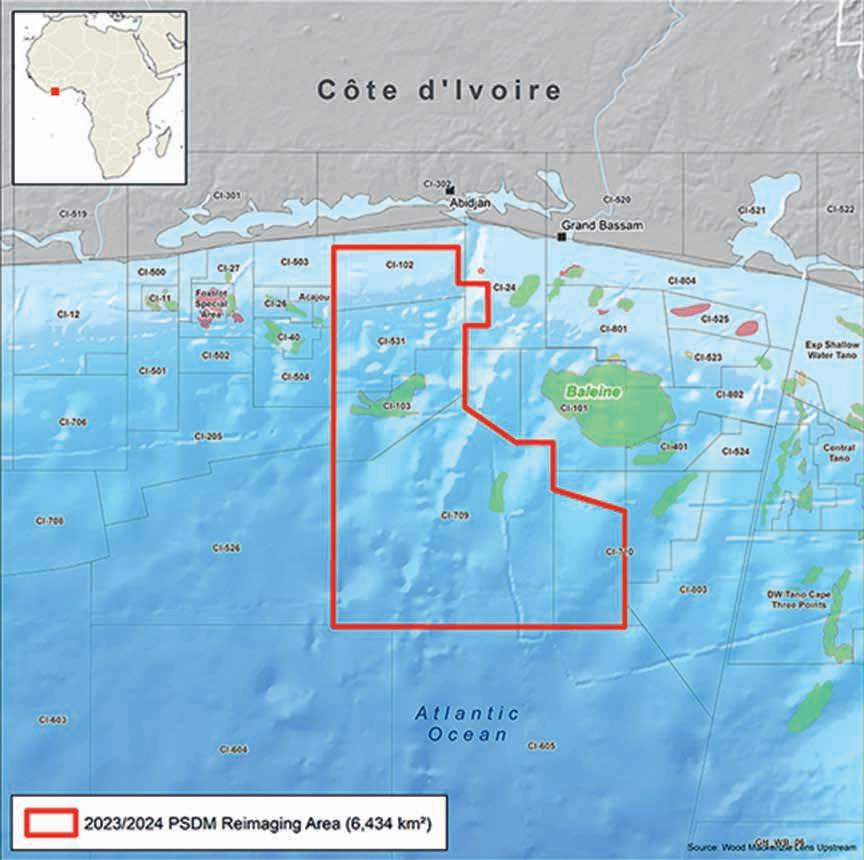
In association with the country’s Direction Générale des Hydrocarbures (DGH) and national oil company, Petroci, the 6400 km2 reimaged seismic data set near the recently discovered Baleine field
will give interested industry operators insight into this new play. The project is expected to complete by the end of 2024, with a fast-track volume available in Q1 2024.
CGG will draw on two decades of geoscience experience in Côte d’Ivoire to reimage the 3D seismic data with time-lag FWI, QFWI, and the potential application of targeted FWI imaging. The team will also conduct a regional interpretation of the project area to provide a better understanding of the distribution of the highly prospective clastic and carbonate plays in the Tano basin.
Dechun Lin, EVP, Earth Data, said: ‘The recent discovery of the Baleine field has led to heightened exploration interest in offshore Côte d’Ivoire. Our reimaging project is the first of its kind to utilise cutting-edge technology to enable confident evaluation at a prospect as well as regional level, to give a better picture of the subsurface in this world-class basin. The resulting ultramodern data set will offer unique access to near-field exploration opportunities, placing IOCs a step ahead in fast-tracking the development of these high-impact prospects.’
TGS has announced a northern extension to its previously announced Pontiac 3D Survey in the Midland Basin, Texas, US. The extension increases the size of the Pontiac 3D from 167 miles2 to a total of approx. 267 miles2 and is located in Midland, Ector, Upton and Crane counties, Texas.
The Northern Extension of the Pontiac 3D sits on the western edge of the Midland Basin and encompasses historical production from Sprayberry and Wolfcamp intervals along with significant accumulations in deep-seated structures in the Devonian and Ellenburger formations. The survey is designed to assist in the evaluation and horizontal development of multiple zones including the emerging Barnett Shale,
Mississippi Lime, and Devonian horizons which are highly prospective with analogous play concepts having been proven just north of Pontiac in Andrews County. Data acquisition is expected to begin in Q4 2023 with final data available to clients in early Q3 2024. TGS’ extensive geologic products database complements Pontiac 3D, which includes interpretive products and data from more than ~250,000 wells in the Midland Basin.
David Hajovsky, EVP of the Western Hemisphere at TGS, said: ’The data will be processed by TGS utilising modern land imaging technology, including Dynamic Matching Full Wave Inversion, to provide clients with greater reservoir understanding.’
Seabird has won a 2D contract in the eastern Hemisphere with a repeat client. The three-month contract, pending permitting and prefunding approvals, is expected to start in the middle of Q4 2023. Meanwhile, an OBN source contract for the SeaBird vessel Eagle Explorer has been extended by one month and was expected to complete in late September.
45-8 ENERGY has won $3 million in financing for the Avant-Monts France-comtois helium exploration and production project. The project, covering an area of 306 km² in the west of the Doubs département in eastern France, is a big helium prospect. With the aid of the funding the project has now entered an operational phase.
Trinidad and Tobago has launched its Shallow Water Competitive Bid Round 2023 which includes 13 offshore blocks along the western, eastern, southern and northern coasts. Deadline for submission is 2 April, 2024. Successful bids will be announced four months later. Lynx Information Systems has displayed technical data available for the Bid Round via a Virtual Data Room. Find out more at ttshallowwaterbid2023.com Meanwhile, Trinidad and Tobago has awarded three deep-water blocks to a consortium of bp and Shell.
ExxonMobil is in advanced talks to acquire Pioneer Natural Resources in a deal that could value the US Permian shale basin producer at about $60 billion.
Egypt’s petroleum ministry has launched an international bidding round for exploration in 23 open blocks, with the offer deadline set for February 25, 2024.
Vår Energi has refinanced its senior unsecured working capital facility of $1.5 billion with an extended $1.5 billion loan maturing on 1 November 2026. The new facility has similar terms as the previous one and is provided in equal proportions by 14 international banks. Vår Energi is assigned a BBB credit rating from S&P and Baa3 from Moody’s, both with stable outlook.
TotalEnergies, Petrobras and Case dos Ventos Holding have signed an agreement to develop renewable energy and low-carbon hydrogen projects in Brazil. The three companies will jointly study opportunities of investment and offtake in onshore wind, offshore wind, solar and low-carbon hydrogen.
The UK and Germany have signed an agreement to work together to accelerate the development of an international hydrogen industry. The British Energy Security Strategy set the ambition of developing 10GW of low carbon hydrogen production capacity in the UK by 2030. At least half of this will be from electrolysis and the rest from CCS using gas as the feedstock.
Aker Carbon Capture has been awarded a feasibility study to implement carbon capture for mineral production facilities in the US Midwest. The combined planned capture capacity will be approximately 1.5 million tonnes CO2 per year.
Four companies have submitted applications with proposed acreage for storing CO2 in the Norwegian North Sea, said the Norwegian Petroleum Directorate.
Adnoc has formed a partnership with EDGE Group PJSC to deploy UAE-made unmanned aerial vehicles (UAVs) across its onshore and offshore operations. EDGE will repurpose its existing UAVs for ADNOC to deploy in its operations, to minimise emissions and enhance environmental performance, monitor operations, and provide support in emergency response situations.
Star Energy has won two highly prospective geothermal projects in Croatia. The fiveyear licences, Sjece and Pcelic, are in the Drava depression geological region (the southwestern area of the Pannonian basin).
The US Bureau of Ocean Energy Management (BOEM) has completed its environmental review of the proposed Empire Wind Farm Project offshore New York. Empire Wind, LLC, proposes to construct two offshore wind projects.
Westwood has reported that substantial drilling activity, averaging 53,000 wells per year through to 2030, will help to elevate production of crude, condensate, natural gas and natural gas liquids (NGLs) to a high of 173mmboepd by 2030, up 9% from 159mmboepd in 2022
The consultancy and market research group’s findings, forming part of Westwood’s Wells & Production Outlook 2023-2030, indicate that 428,000 wells are expected to be drilled over the forecast period, with onshore accounting for 95%, dominated by China, Russia and the US. Offshore, more than 17,000 surface wells are forecast, with activities driven by Qatar and Saudi Arabia, while 2000 subsea wells are expected between 20232030, led by the Americas.
Liquids production (crude, condensate and NGLs) is forecast at 100mmbpd by 2030, up 8% on 2022, driven by increased crude production from deepwater areas, such as Brazil and Guyana, as well as additional supply from the Middle East.
Much of the basis for this supply has been sanctioned. Between Brazil and Guyana 3mmbpd of floating production, storage and offloading (FPSO) capacity have passed final investment decisions but are yet to commence commercial operations, while many of the major

expansion projects in Saudi Arabia and the UAE have also been sanctioned, with construction underway.
Gas production is expected to increase 10% by 2030 from new projects in areas such as Mozambique, the Mediterranean, onshore US and brownfield developments, such as the North Field expansion offshore Qatar.
Ben Wilby, senior analyst, Westwood said: ‘The level of investment seen in the last few years will lead to a material increase in structural production capacity over the forecast. As a result, continued OPEC+ intervention will likely be required beyond 2024 to ensure a balanced market and for oil prices to remain at or above Saudi Arabia’s fiscal breakeven range.’
Final imaging products for phase 1 of the Sarawak multi-client programme, offshore Malaysia, have been made available by PGS, TGS and SLB.
The package being offered by the consortium includes AVO analysis of prospects and leads using 8400 km2 of broadband depth.
The data targets the proven Tatua Grabens and West Luconia province of Sarawak, an area that consists of Tertiary clastic and carbonate targets, which is part
of the greater northwest Borneo Sundaland geological province.
Phase 2 is still in processing and will add 13,100 km2 of new and rejuvenated data, while Phase 3, which is now in acquisition, will expand coverage with a further 5300 km2 of broadband data.
The Sabah-Sarawak seismic consortium has a multi-year licence to acquire and process up to 105,000 km2 of multi-client 3D data over a five-year period in the Sarawak Basin.
Equinor and Ithaca Energy have taken the final investment decision to progress Phase 1 of the Rosebank development West of Shetland on the UK Continental Shelf (UKCS), investing $3.8 billion.
The UK North Sea Transition Authority (NSTA) has granted consent for the development of the field despite fierce criticism from environmental groups.
The Rosebank field is located around 130 km north-west of Shetland in approx. 1100 m of water depth. Total recoverable resources are estimated at around 300 million barrels of oil, with Phase 1 targeting estimated 245 million barrels of oil
The field will be developed with subsea wells tied back to a redeployed Floating Production Storage and Offloading vessel (FPSO), with start-up planned in 2026-27.
‘Developing the Rosebank field will allow us to grow our position as a broad energy partner to the UK, while optimising our oil and gas portfolio, and increasing energy supply in Europe,’ said Geir Tungesvik, executive vice-president projects, drilling and procurement at Equinor.
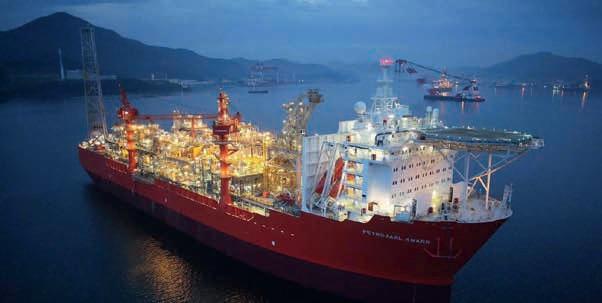
The Rosebank oil and gas field is being developed in compliance with the North Sea Transition Deal, an agreement between the UK government and the offshore industry which acknowledges that remaining demand for oil and gas must be met with the lowest emissions possible.
The FPSO has been designed to be electrification-ready and Equinor is collaborating with government and industry to pursue a regional solution for power from shore to Rosebank and nearby fields to minimise carbon emissions from production.
According to an independent report by Wood Mackenzie and Voar Energy, Rosebank is estimated to create £8.1 billion of total direct investment over the lifetime of the field.
‘We know that the world needs to transition to new, cleaner energy systems and our broad energy investments into the UK support this. And while we do this there is going to be a continued need for oil and gas, which currently meets 76% of the UK’s energy needs,’ said Arne Gürtner, senior-vice president upstream at Equinor in the UK. Today, Equinor supplies 29% of the UK’s gas, and 15% of the UK’s oil. It is currently working with the UK government to develop plans to invest more than £10 billion in the UK by 2030. ‘For every £1 we plan to invest in the UK in oil and gas we aim to spend over £2 in renewables, CO2 capture and storage, and hydrogen,’ the company added.
CGG has completed the eastern phase of its GeoVerse Carbon Storage Gulf of Mexico Study and started the westward extension of the study. Both phases of the project are available for licensing with final products for the westward expansion phase available in Q1, 2024.
These studies provide a map-based assessment of carbon storage opportuni-
ties coupled with a desktop-ready well database and web-based visualisation dashboards.
Dechun Lin, EVP Earth Data, CGG, said: ‘The newly released study that spans the Texas and Louisiana gulf coast provides critical subsurface information to accelerate exploration for suitable carbon storage sites in this promising region.’







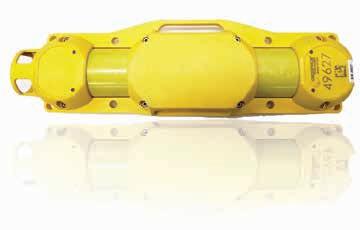







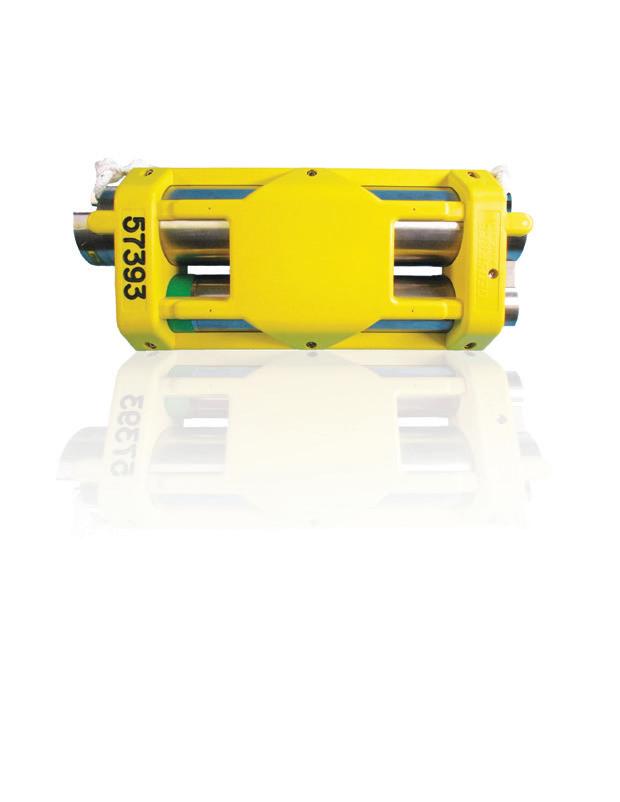




TGS has announced that it can now provide access to derivative standardised well data from ~300 wells in Trinidad and Tobago onshore and offshore basins.
TGS well packages are interpretation-ready and include products such as standardised digital logs (LAS, LAS+, Mud LAS, Lith LAS), validated well headers and quality-controlled directional surveys. Well packages will be licensed and delivered to customers through TGS’ cloud-based R3GO Platform.
Well data will further enhance geological understanding of the area and enable E&P companies to maximise the potential for deepwater discoveries in one of the world’s most prolific exploration basins, said TGS. The data will complement existing TGS 2D seismic coverage and wide-ranging basin studies offshore Trinidad and Tobago and support operators in assessing prospectivity in blocks included in the upcoming Shallow Water Bid Round.
Jan Schoolmeesters, executive vicepresident of digital energy solutions at TGS, said: ‘In addition to high-quality seismic data, we are pleased to offer a standardised well data catalogue for both onshore and offshore wells in Trinidad and Tobago. Our well data processing enables customers to start interpretation right away, ultimately enhancing their ability to evaluate exploration opportunities and block prospectivity for current and future licensing rounds.’ View the data at www.tgsr360.com/.
The US Bureau of Ocean Management (BOEM) is planning to Gulf of Mexico Outer Continental Shelf Oil and Gas Lease Sale 261 on 8 November.
The bureau was forced to postpone the planned lease sale on 27 September after a United States Court of Appeals
for the Fifth Circuit ruling on 25 September. ‘The order allows time for a more orderly lease sale process,’ said BOEM.
The court directed BOEM to include lease blocks that were previously excluded due to concerns regarding potential
Equinor has submitted a plan for development and operation (PDO) of the Eirin gas field in the North Sea. Recoverable reserves are estimated at 27.6 million barrels of oil equivalent, most of which is gas. The Eirin field will be developed as a subsea facility tied to the Gina Krog platform in the North Sea. Total investments are estimated at just over $350 million.
Eni has made a significant gas discovery from the Geng North-1 exploration well drilled in North Ganal PSC, about 85 km off the cost of East Kalimantan in Indonesia. Preliminary estimates indicate 5 trillion cubic feet of gas in place with a content of condensate estimated up to 400 Mbbls. Acquired data will enable Eni to study the options for fast-track development. Geng North-1 was drilled to a depth of 5025 m in 1947 m water depth, encountering a gas column about 50 m thick in a Miocene sandstone reservoir with excellent petrophysical properties that have been subject of an extensive data acquisition campaign.
A consortium of Eni (34%), QatarEnergy (33%) and bp (33%) has won exploration and production rights for block EGY-MED-E8 (East Port Said) offshore Egypt as part of the 2022 EGAS International Bid Round.
Norway and the UK have granted consent for the start up of the Tommeliten A field in the North Sea. Operator ConocoPhillips estimates that around 24 million standard m3 (150 million barrels) of oil equivalent can be recovered from the field. The operator estimates investments of $900 million. The mainly gas and condensate field is a transboundary project with a marginal share on the UK shelf. Tommeliten A will include 11 development wells, seven of which will be completed after start-up. The operator expects to complete the four remaining wells during the first quarter of 2024.
Arena Energy has won seven leases from the Bureau of Ocean Energy Management (BOEM) in Lease Sale 259 in
impacts on the population in the Gulf of Mexico.
It plans to hold Lease Sale 261 no later than 8 November, 2023 to comply with the Appeals Court ruling. A revised Final Notice of Sale has been issued. www.boem.gov/sale-261.
the Gulf of Mexico. The leases – totalling 34,965 acres – range in water depth from 62 to 217 feet in the Gulf of Mexico off the coasts of Texas and Louisiana in the Eugene Island, Main Pass, and Matagorda Island areas.
DNO Norge has drilled exploration well 25/7-11 S ‘Norma’ in the North Sea with recoverable gas/condensate volumes of between 2-21 million Sm3 proven.
The well was drilled about 20 km north of the Balder field in the central part of the North Sea and 215 km west of Stavanger. DNO Norge is the operator with 30% of the production licence. The other licensees are Equinor (20%), Aker BP (10%), Vår Energi (20%) and Source Energy (20%). The objective of the well was to prove petroleum in Upper Jurassic reservoir rocks in the Draupne Formation. Well 25/7-11 S was drilled to 4786 m below sea level and was terminated in the Heather Formation in the Middle to Upper Jurassic. Water depth at the site is 122 m.
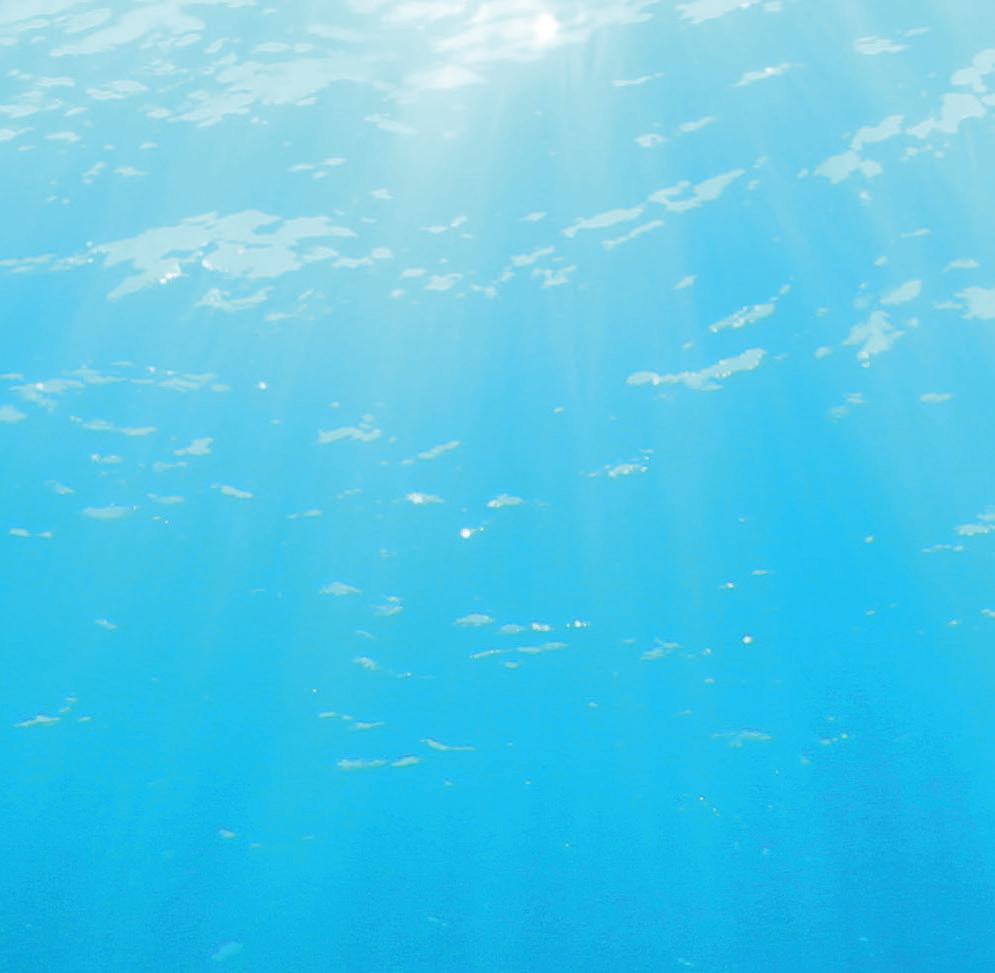
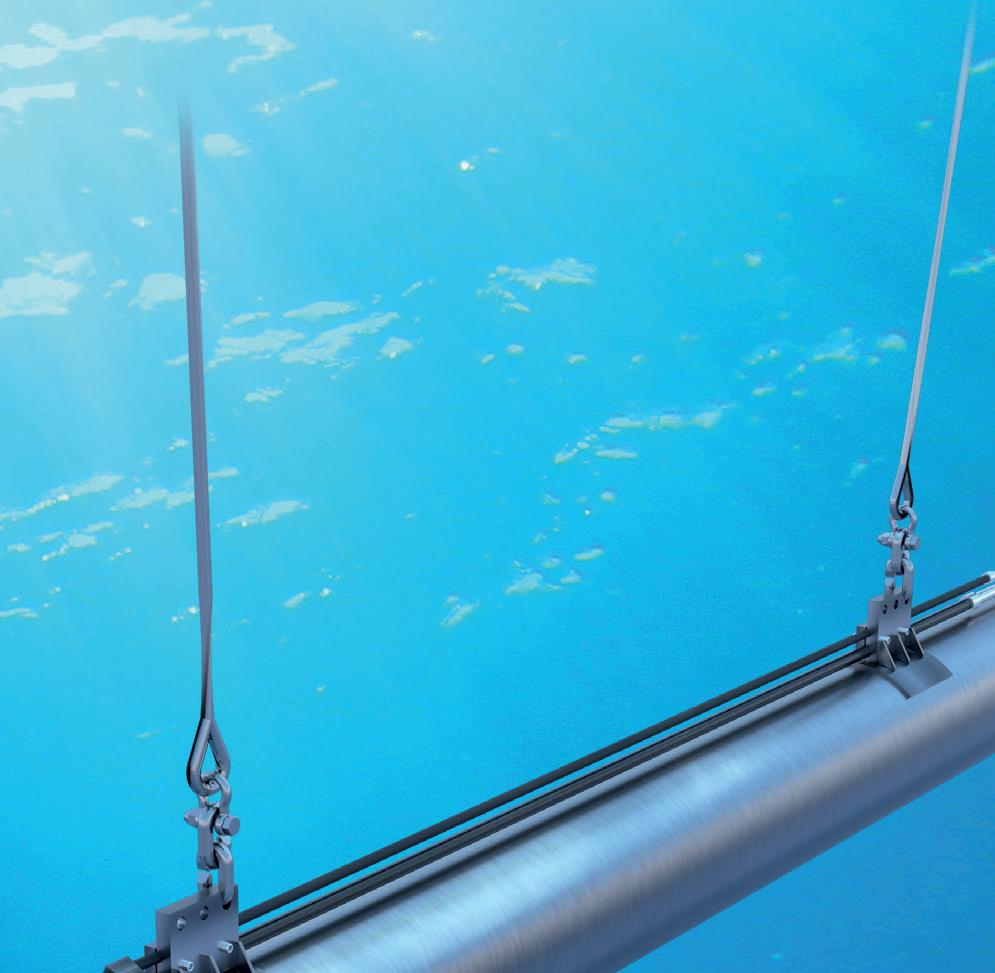


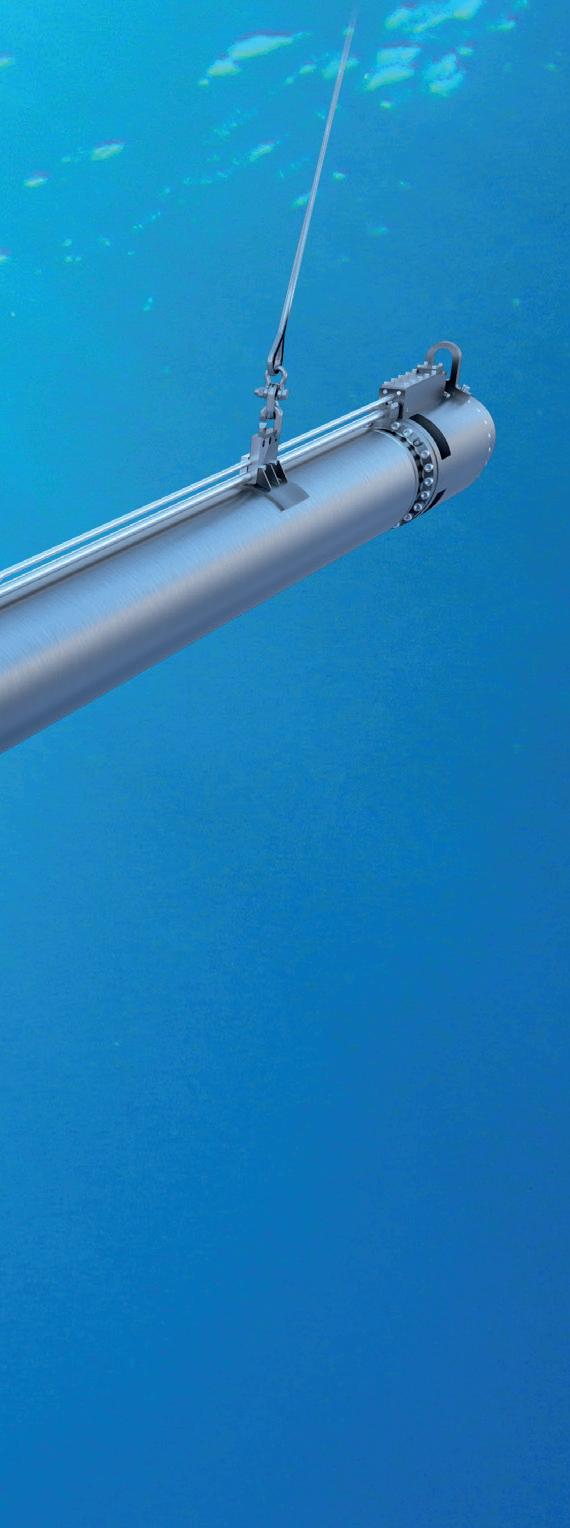
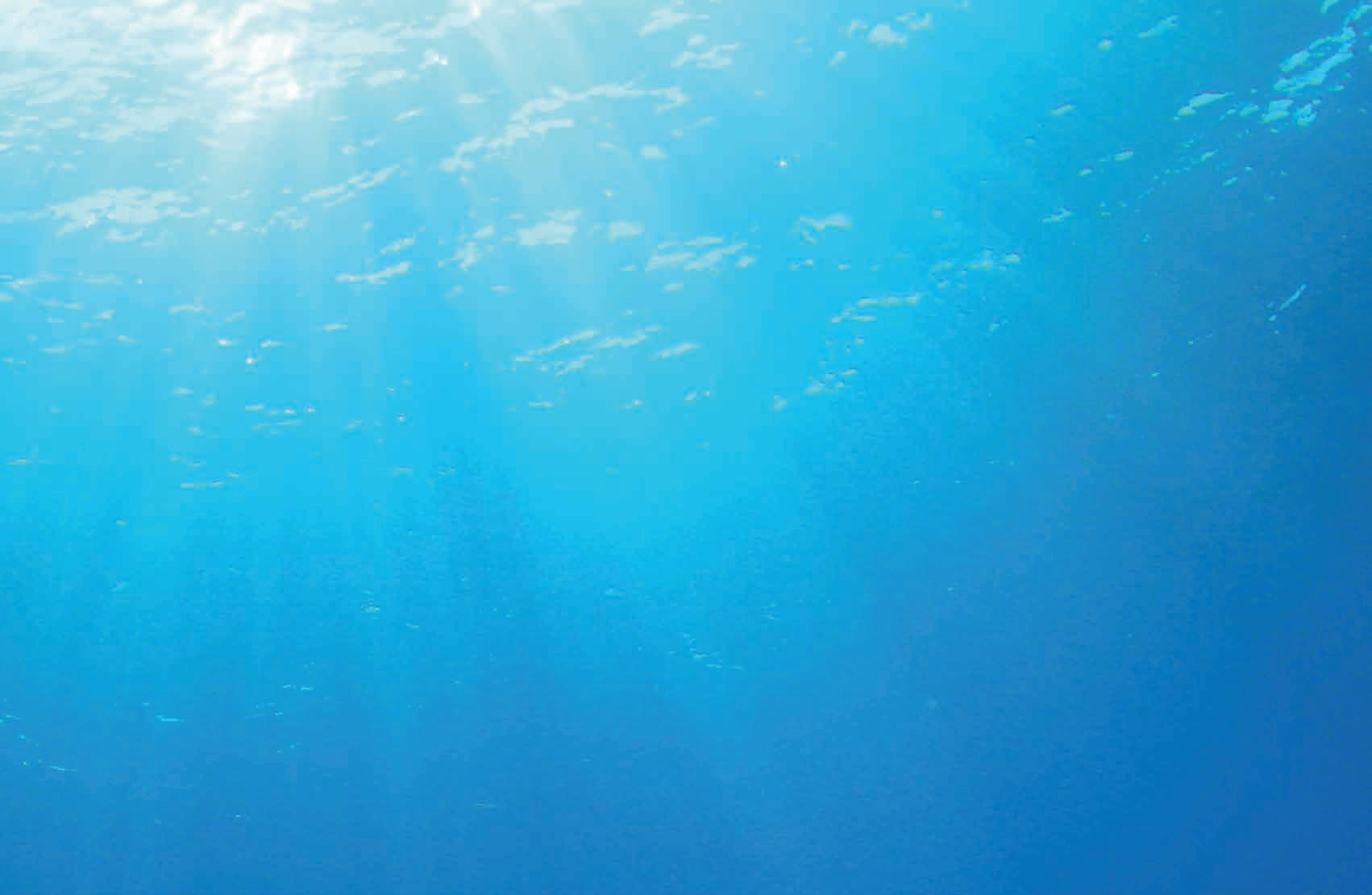
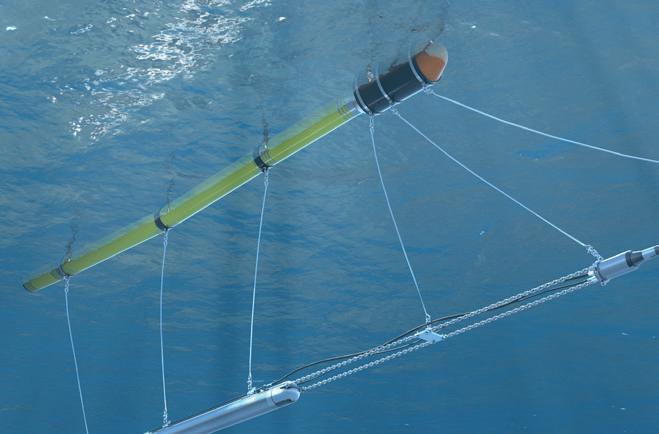

•
•
•
•
•
•
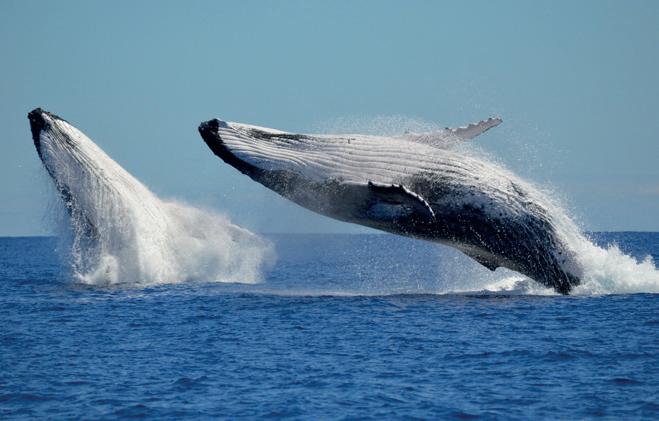

Better market conditions for seismic contractors and data companies are fueling innovation in the marine seismic sector. Deployment of ocean bottom nodes is at the vanguard of new technology and new players are offering services. There is also a growing market in supplying data for offshore windfarms and identifying sites for carbon capture and storage.
Martin Widmaier et al revisit modern towed-streamer acquisition configurations and demonstrate how the same concepts have recently been used to design and acquire the first large CCS development surveys as well as ultra-high resolution 3D site surveys for offshore wind farms.
Fabio Mancini et al propose an acquisition system based on long-endurance, fully autonomous, and self-positioning/self-repositioning nodes.
Alexey Dobrovolskiy makes the case as to why there will soon be a rise in droneborne marine data acquisition in UXO magnetic surveys and bathymetry to collect many kinds of data over water surfaces.
Nicolas Tellier et al argue that Micro-Electromechanical Systems-based digital seismic accelerometers are an excellent alternative to geophones for Ocean Bottom Node seismic projects.
Tim Bunting presents the MantaRay autonomous underwater vehicle as an alternative use of automation to improve the speed of node deployment and recovery.
Richa Rastogi et al introduce an efficient utilisation of the well-established principle of reciprocity to demonstrate the creation of a Pseudo Split-Spread (PSS) shot gather from existing one-sided offset shot gathers.
Marc Rocke et al demonstrate the diversity of uses for single element pneumatic point sources and the promise they hold in opening up flexibility in survey design.
First Break Special Topics are covered by a mix of original articles dealing with case studies and the latest technology. Contributions to a Special Topic in First Break can be sent directly to the editorial office (firstbreak@eage.org). Submissions will be considered for publication by the editor.
It is also possible to submit a Technical Article to First Break. Technical Articles are subject to a peer review process and should be submitted via EAGE’s ScholarOne website: http://mc.manuscriptcentral.com/fb
You can find the First Break author guidelines online at www.firstbreak.org/guidelines.
January Land Seismic
February Digitalization / Machine Learning
March Reservoir Monitoring
April Unconventionals and Passive Seismic
May Global Exploration Hotspots
June Securing a Sustainable Future Together
July Modelling / Interpretation
August Near Surface Geo & Mining
September Reservoir Engineering & Geoscience
October Energy Transition
November Marine Acquisition
December Data Management and Processing
More Special Topics may be added during the course of the year.
Powered by Reveal
Marine seismic processing and imaging services for all your ocean bottom and towed streamer challenges.





























4-6
Nov Fifth EAGE Conference on Petroleum Geostatistics www.petroleumgeostatistics2023.org
19-21 Feb EGYPES 2024 www.egypes.com





















